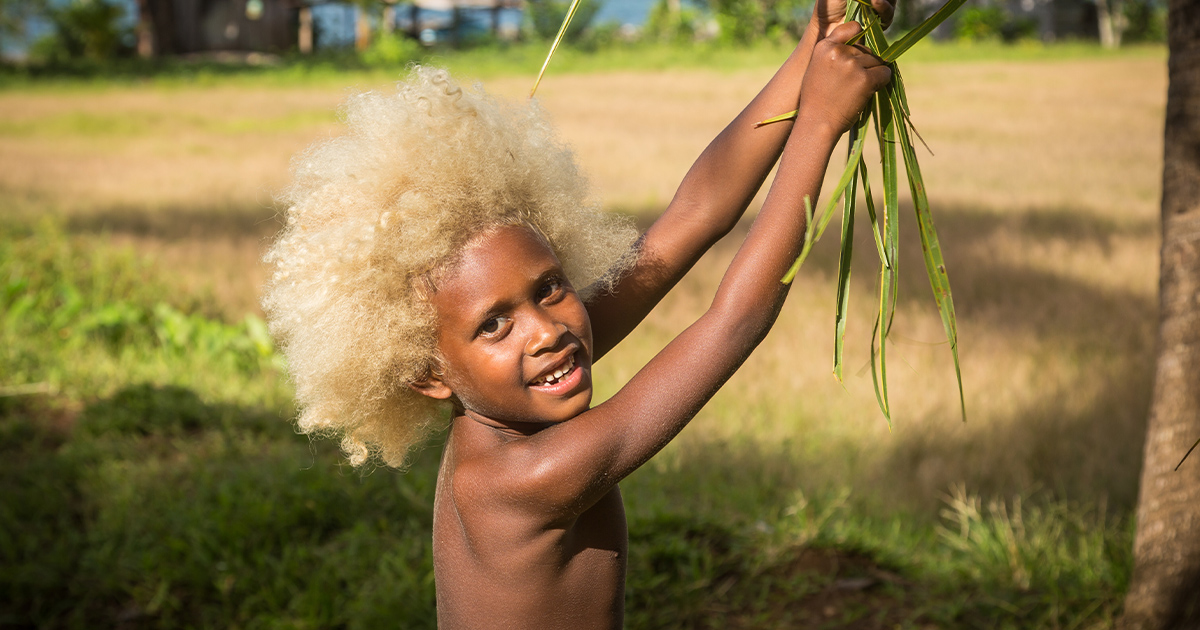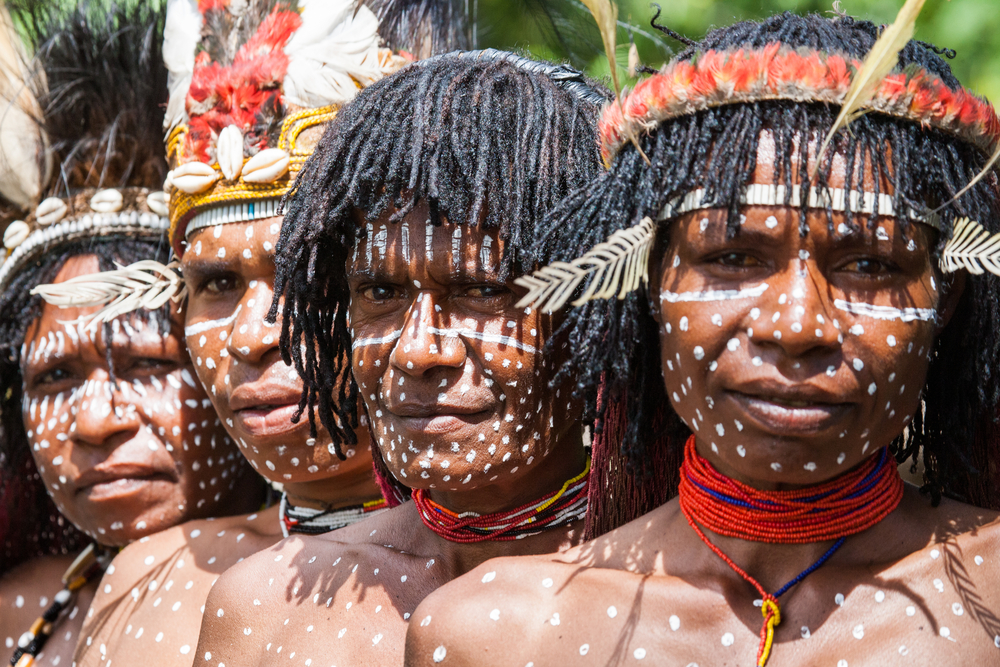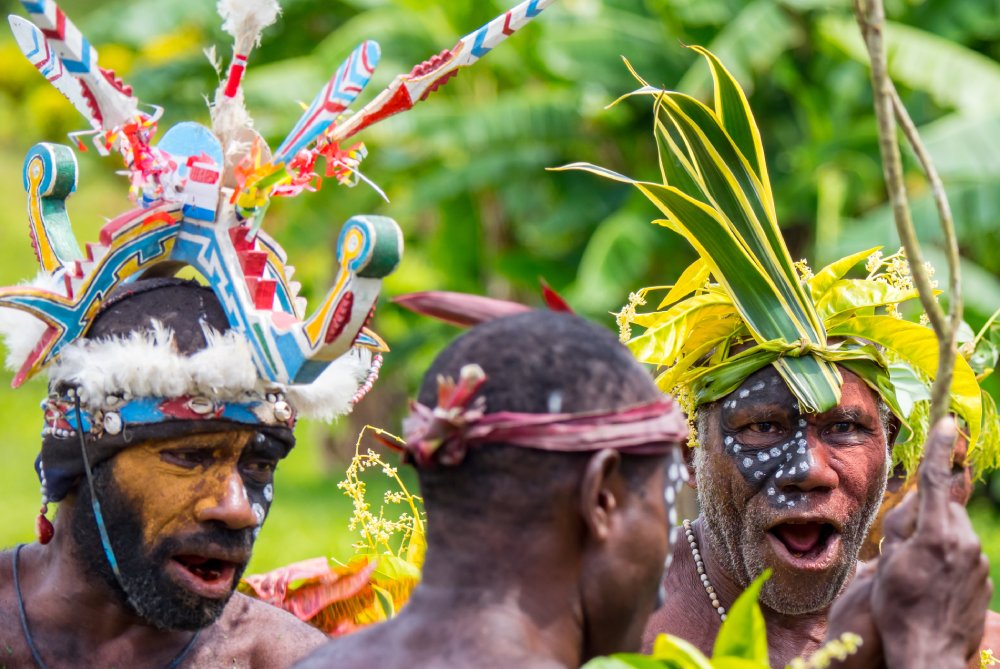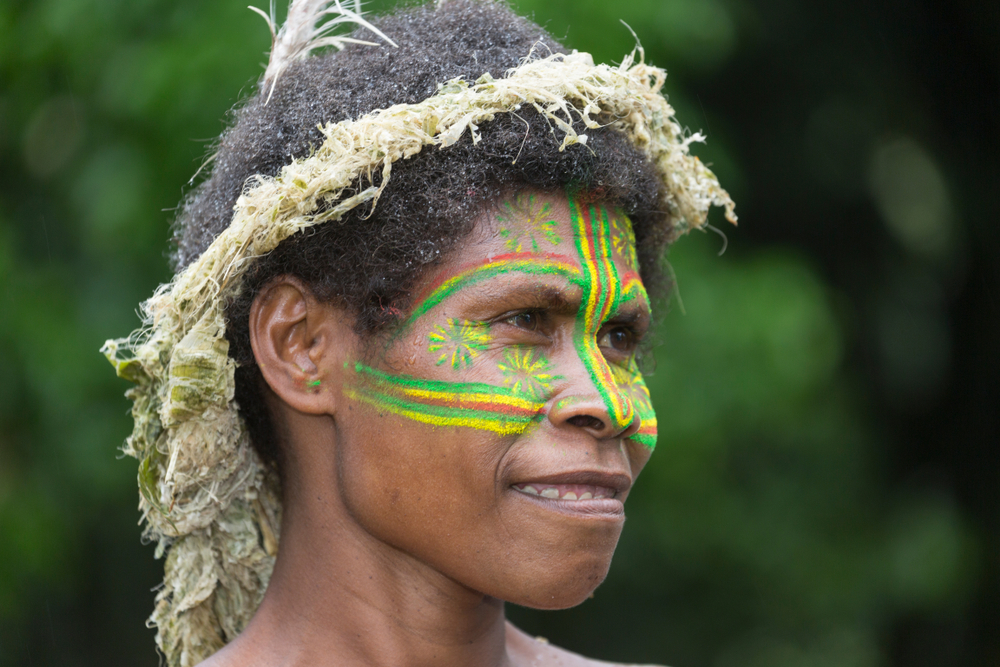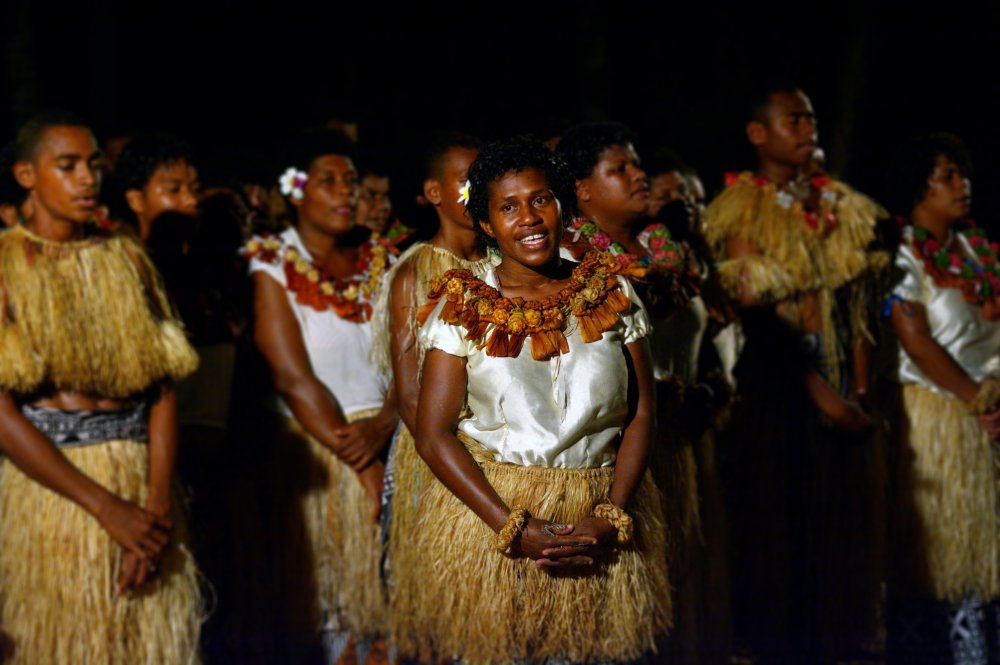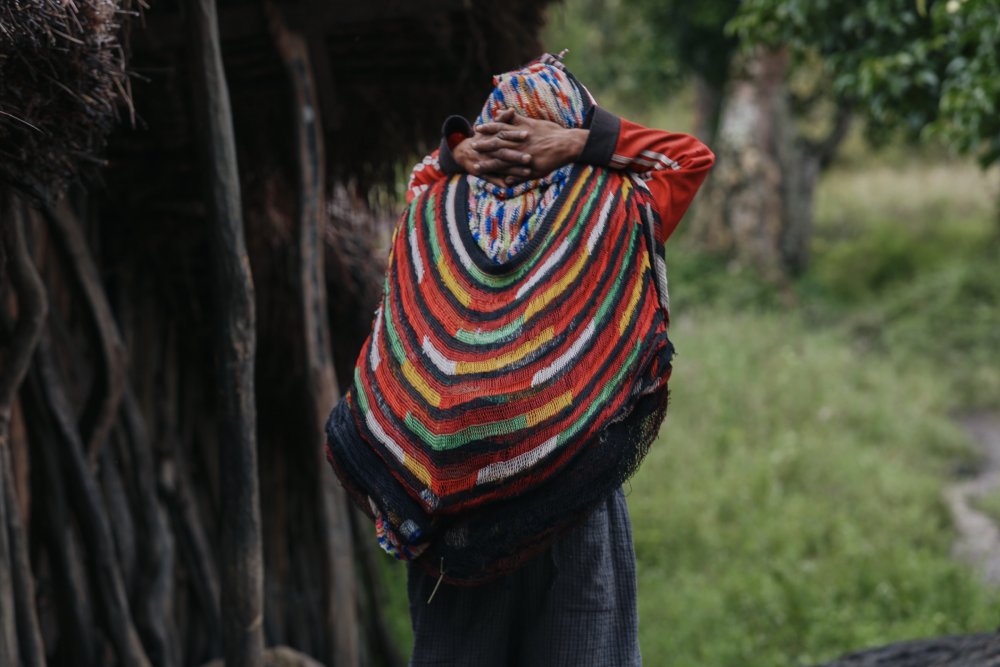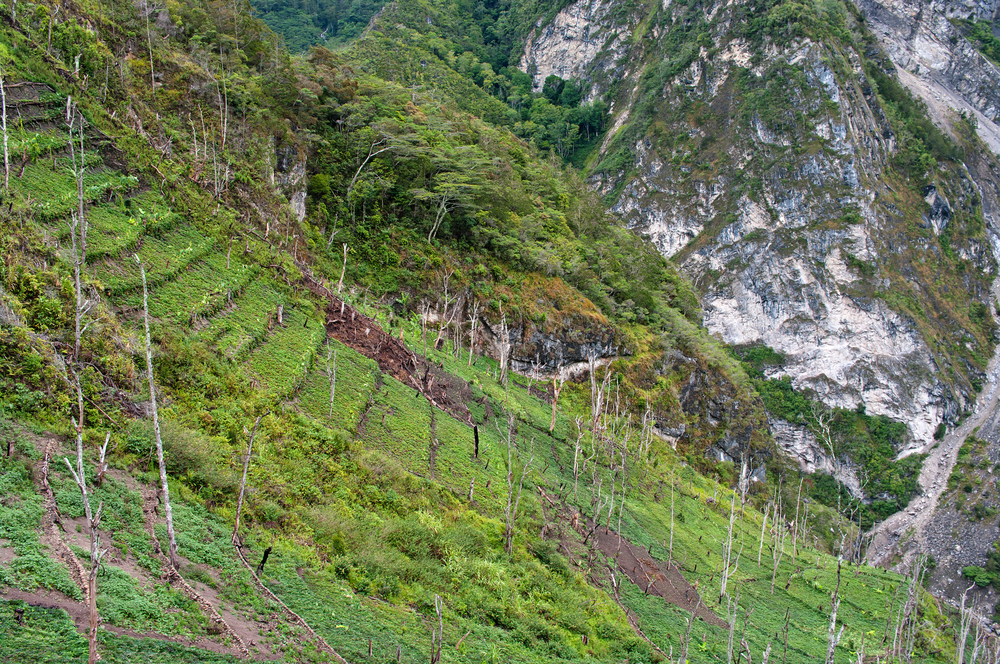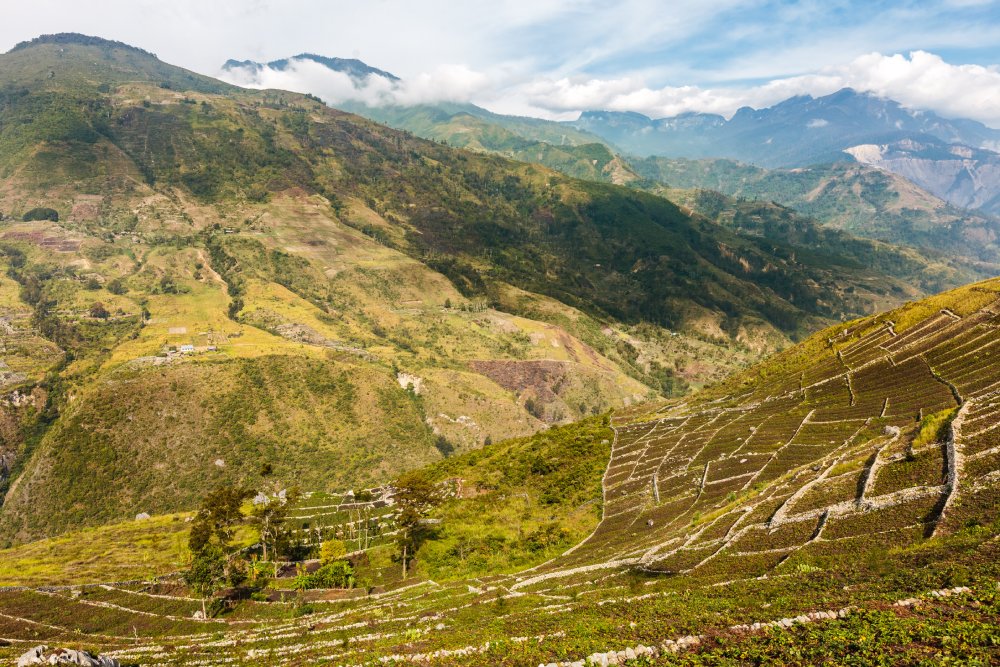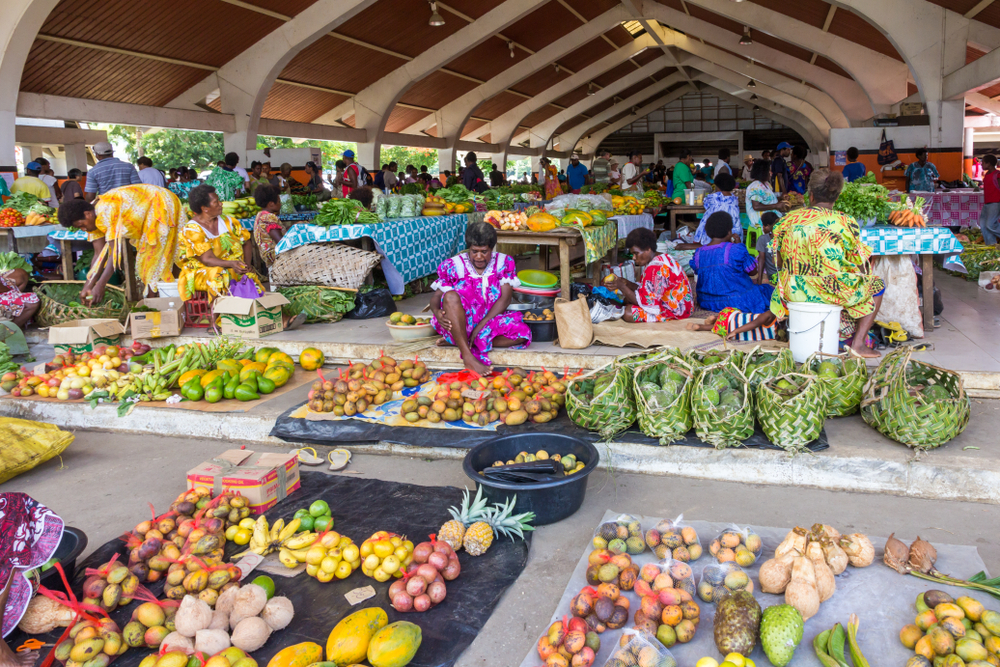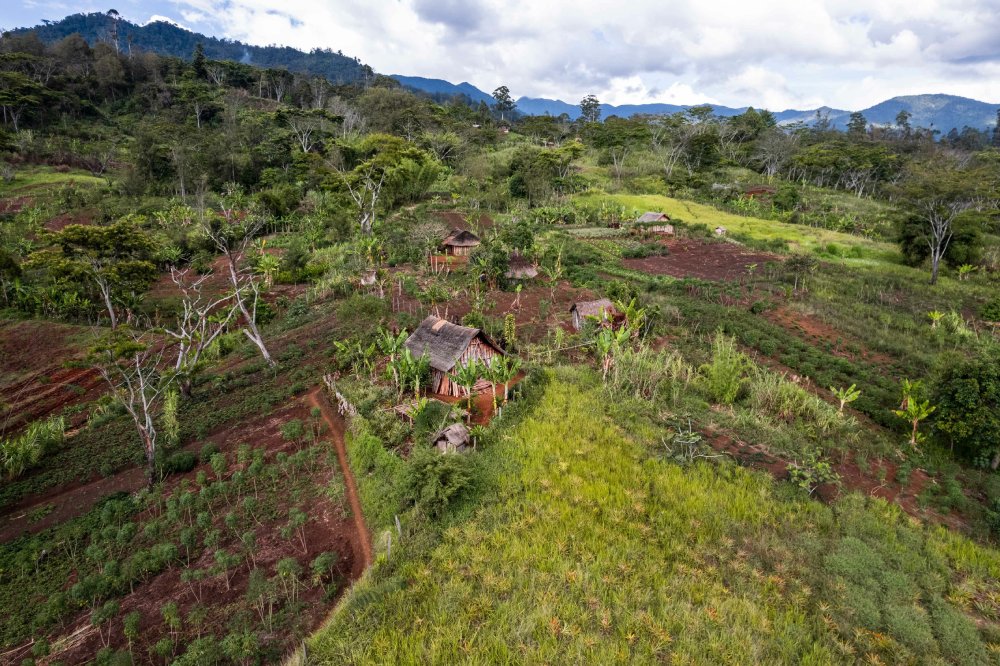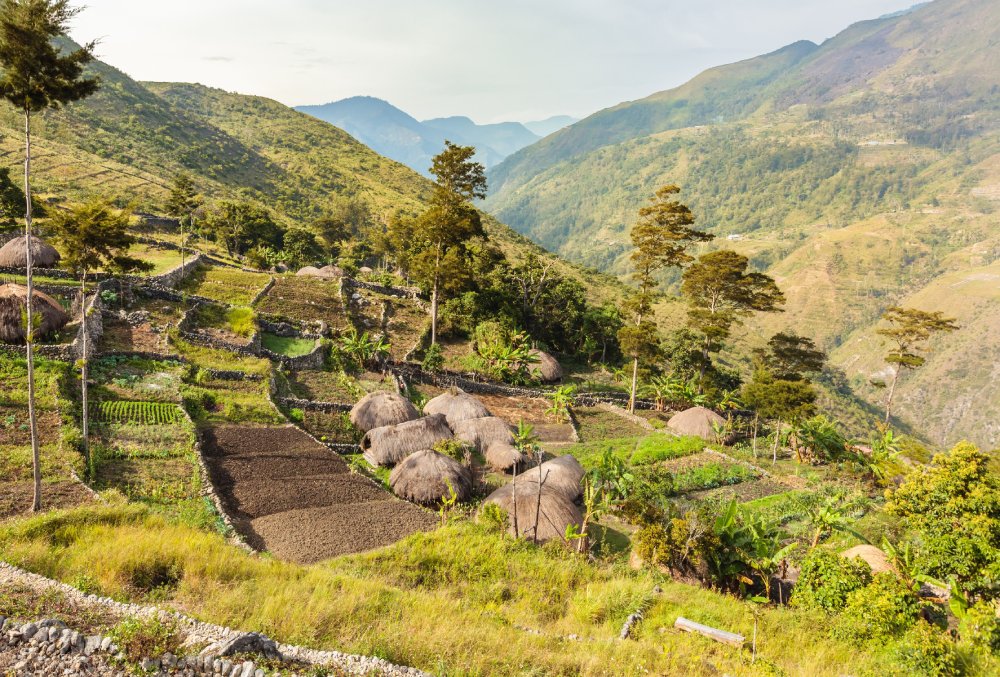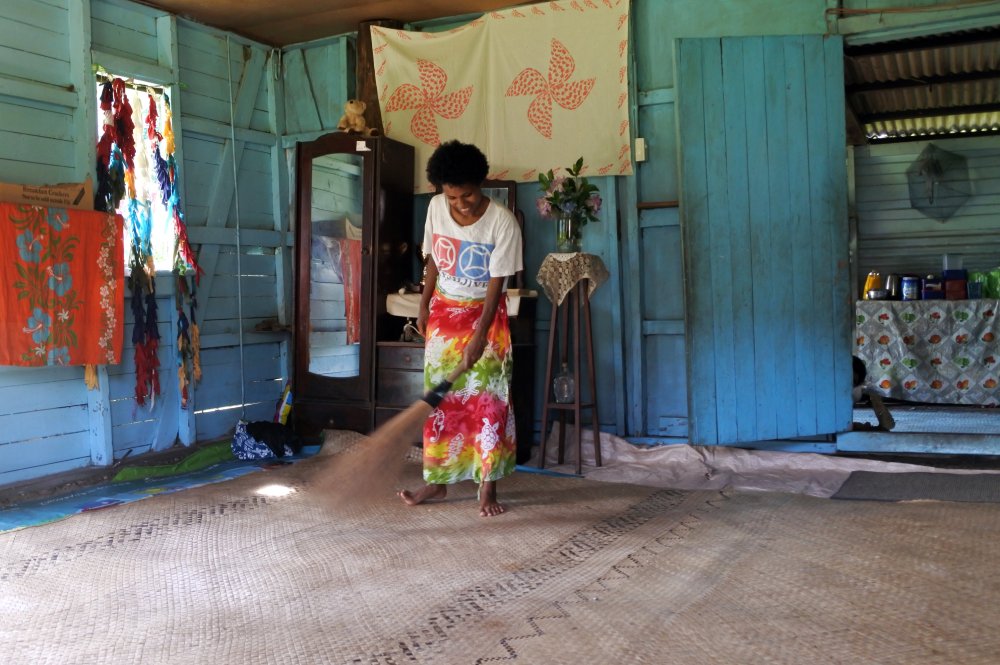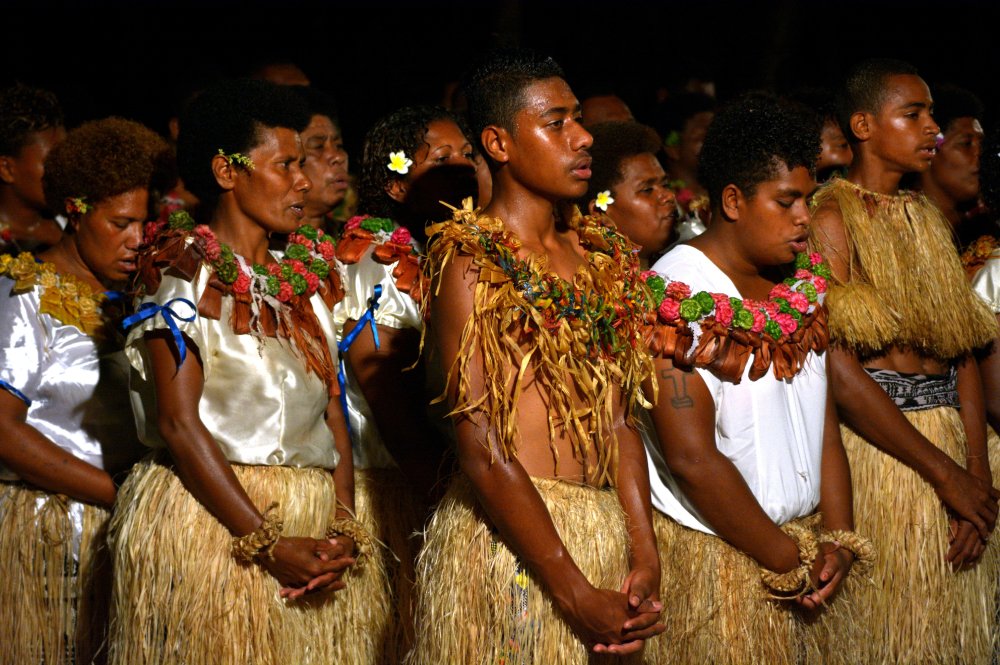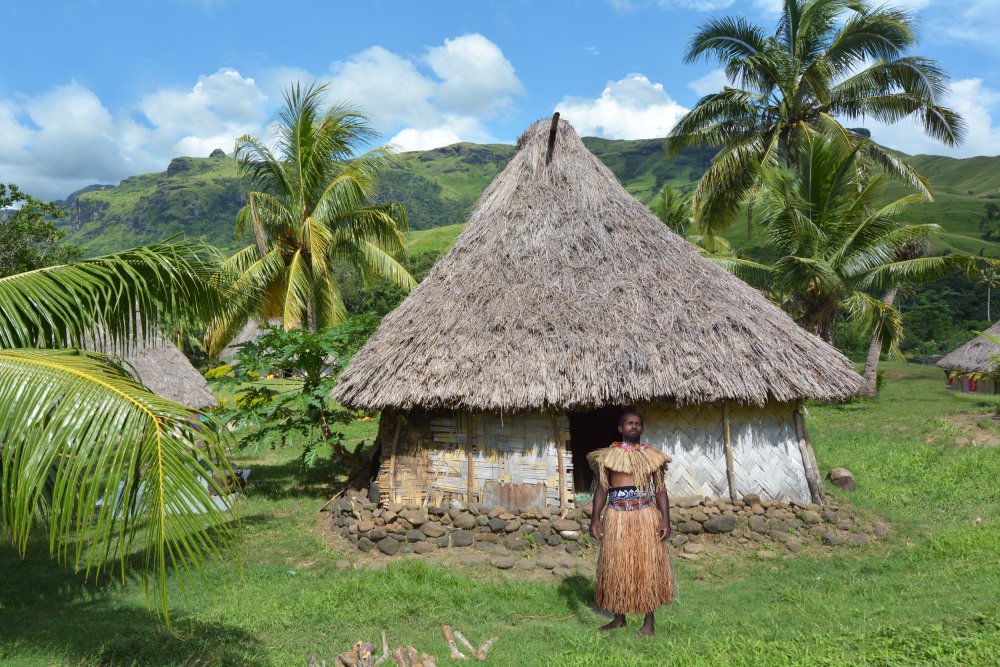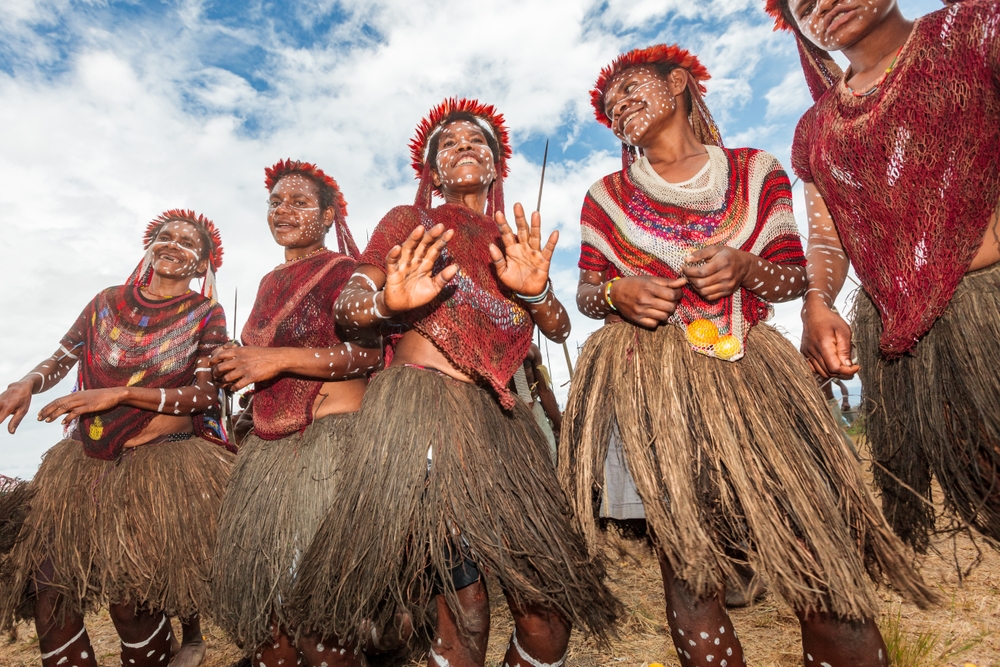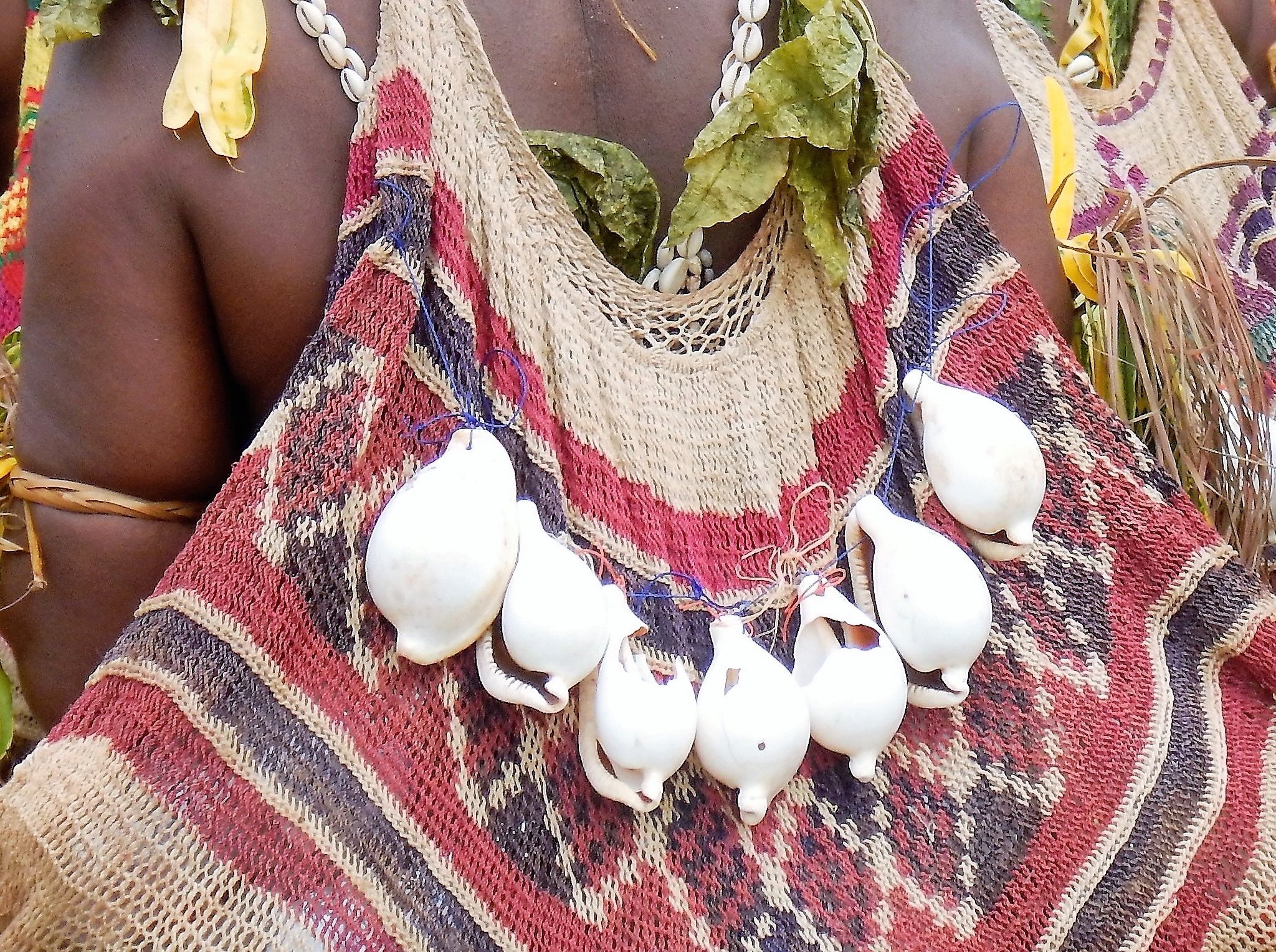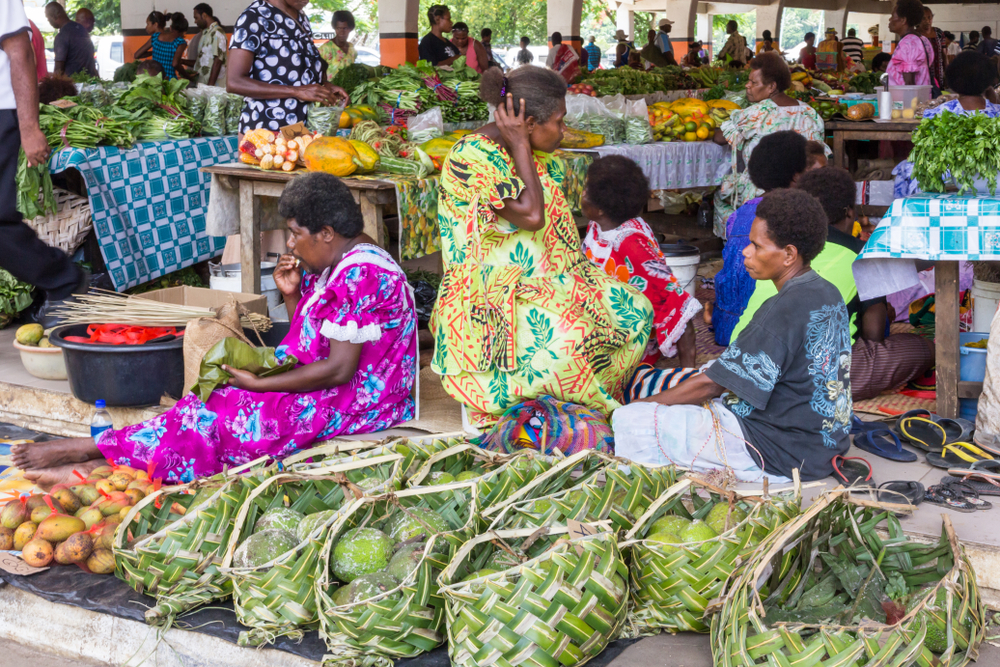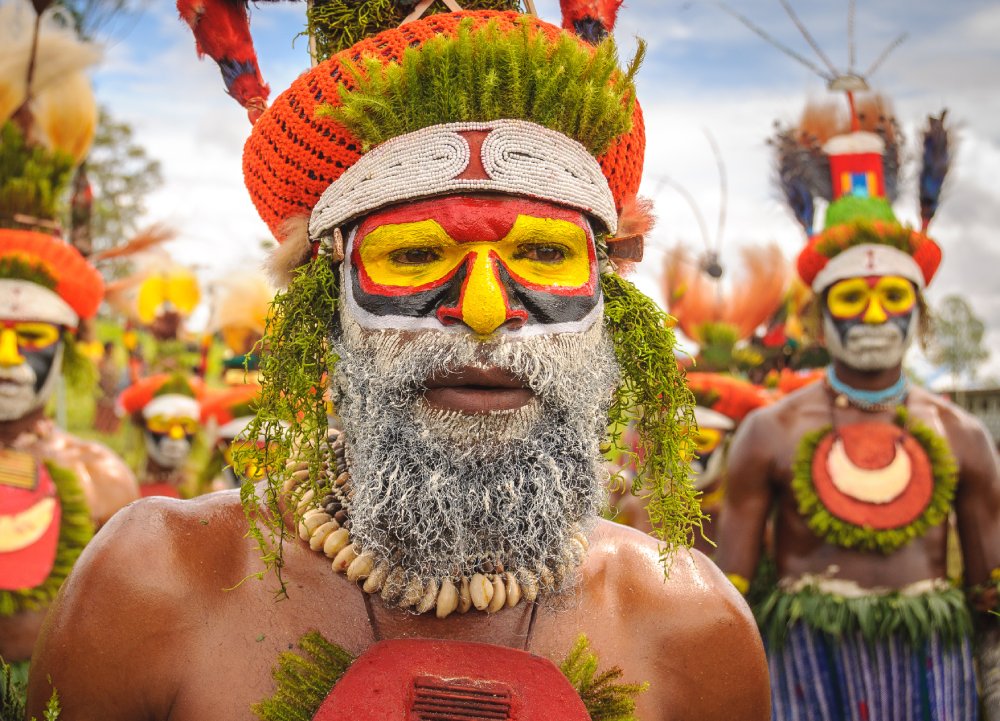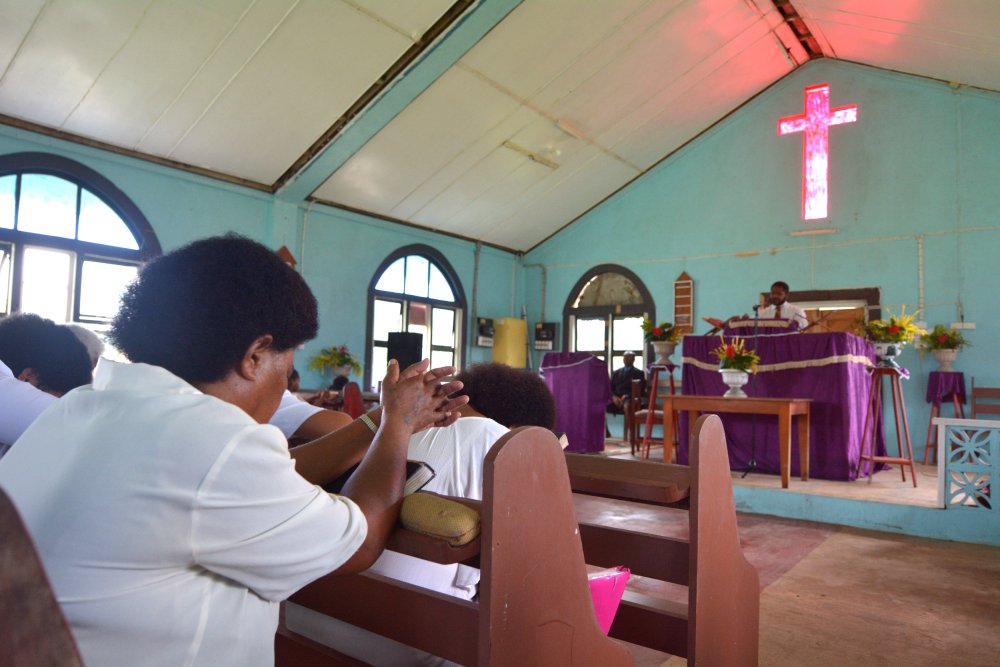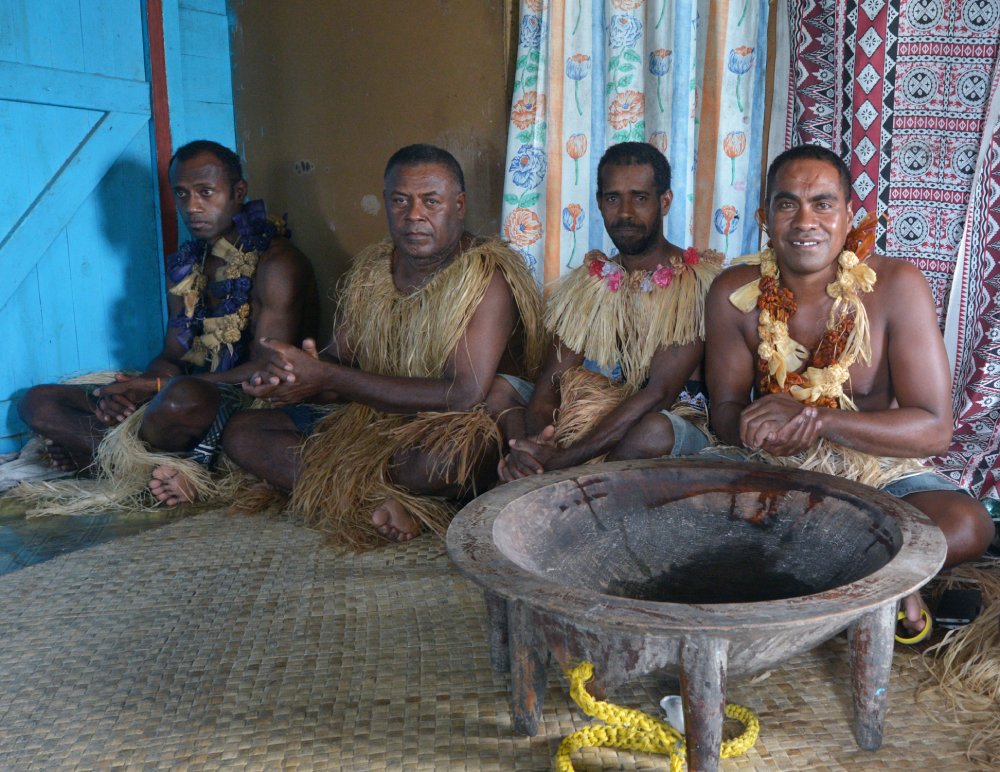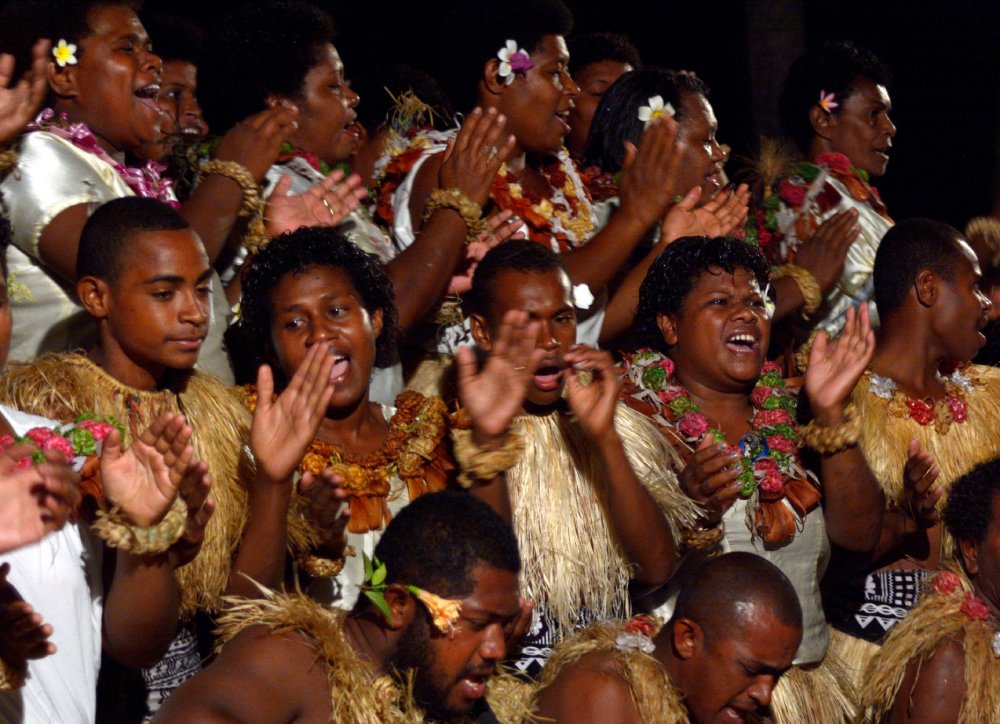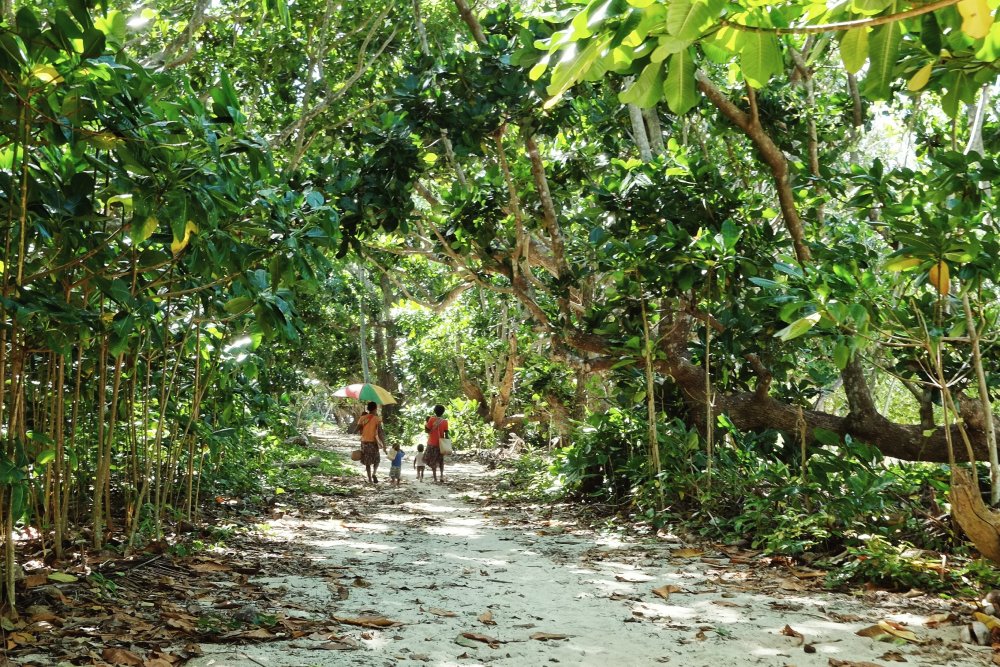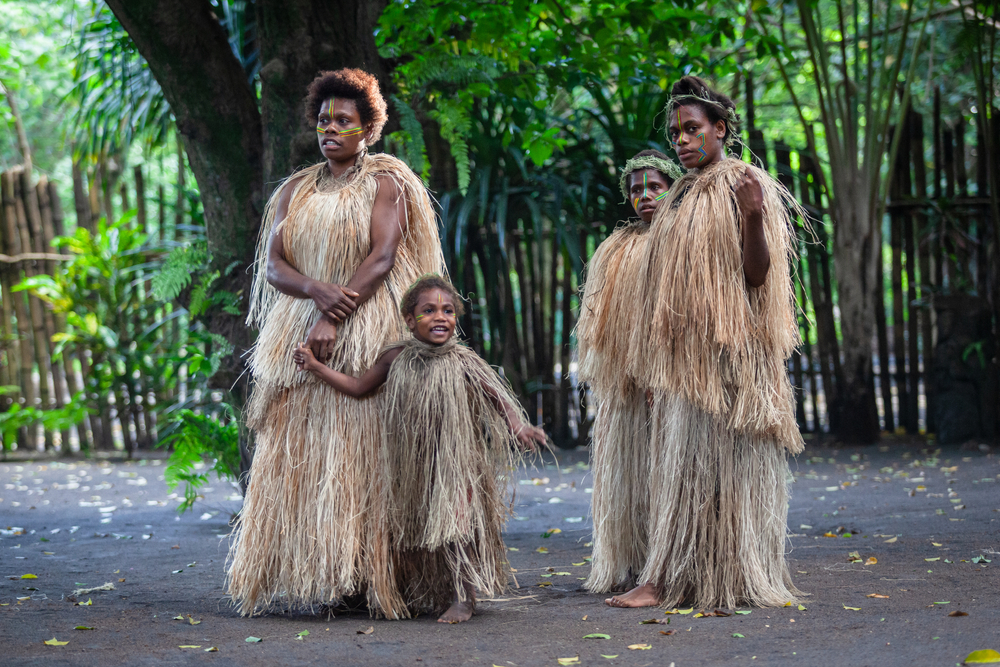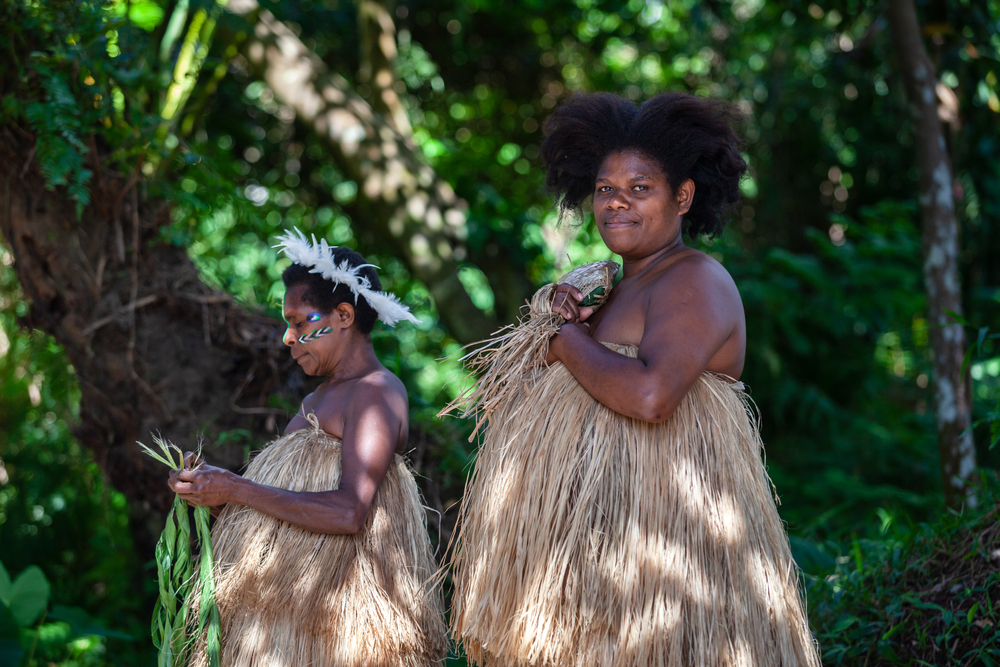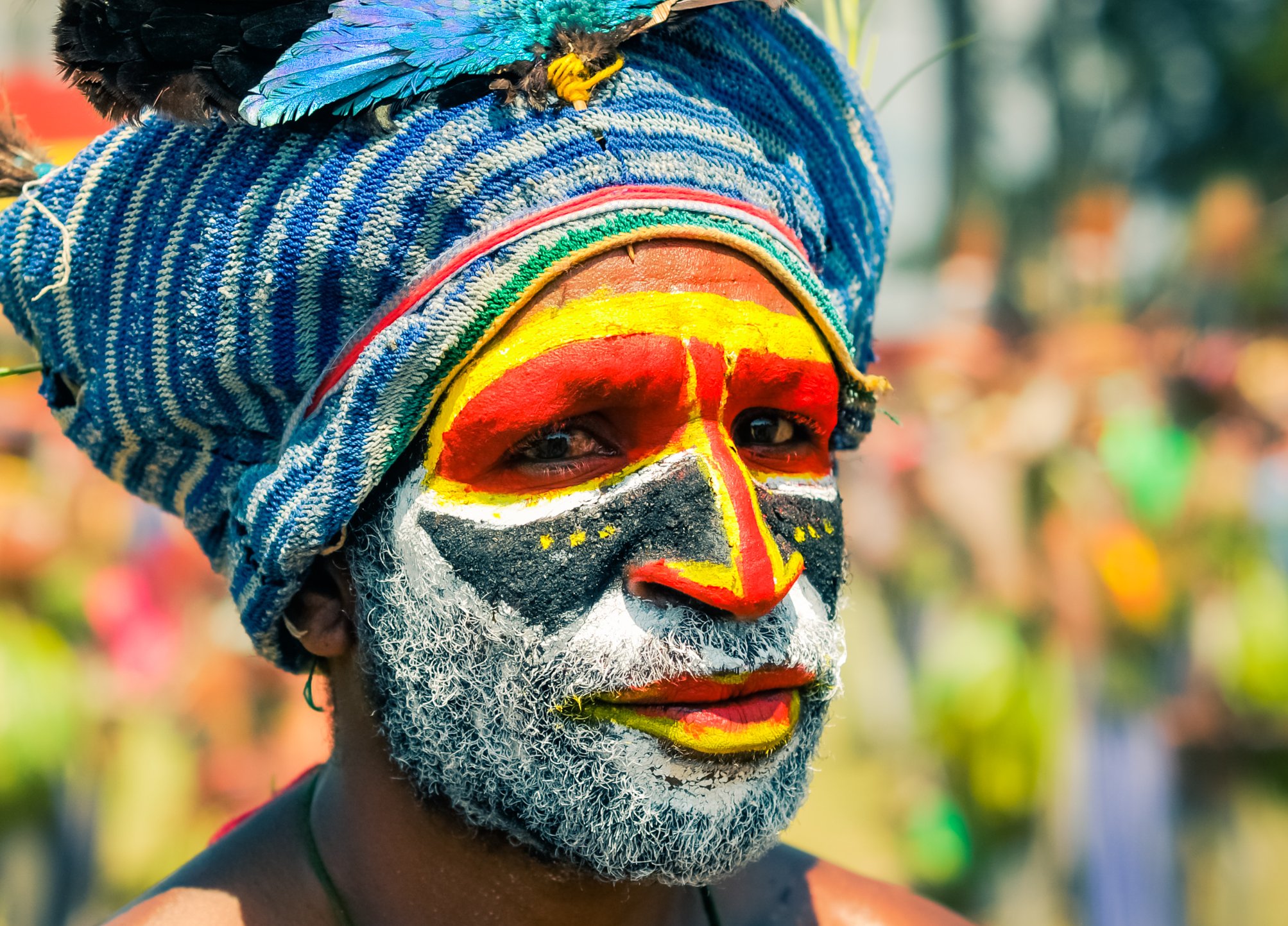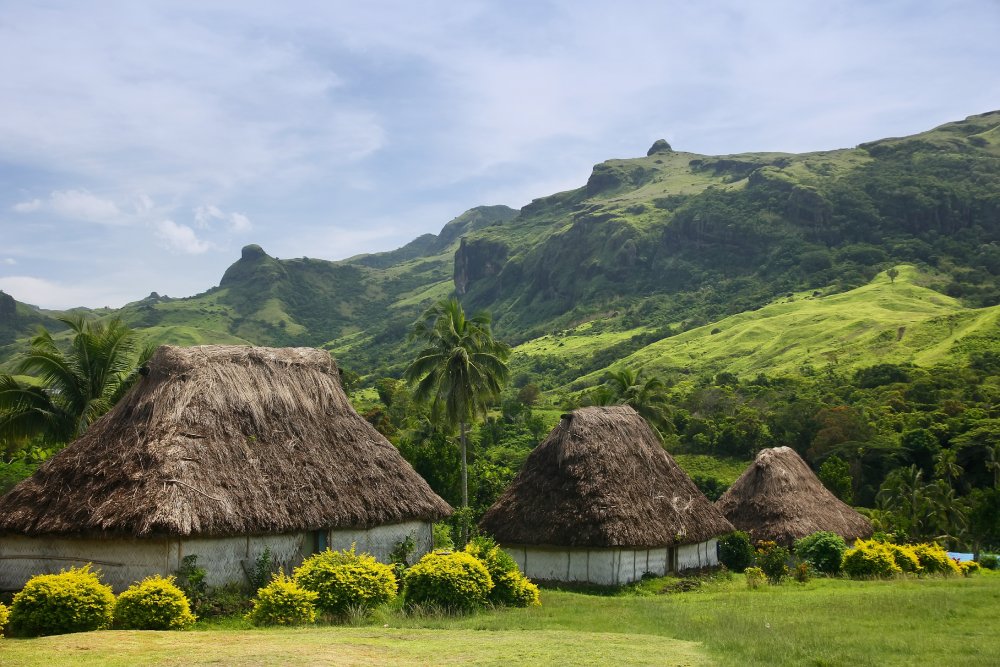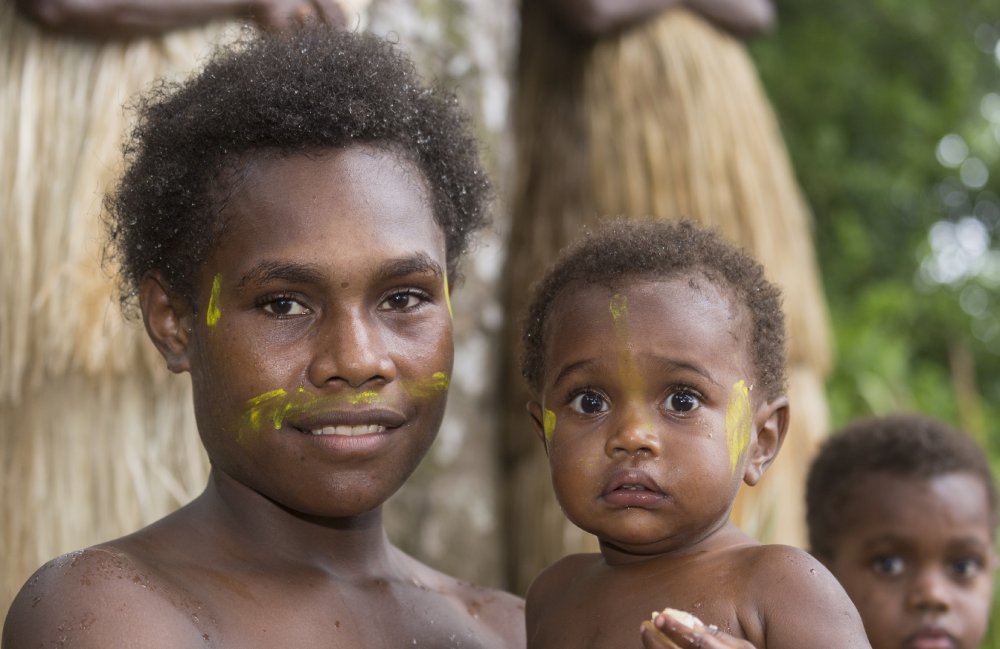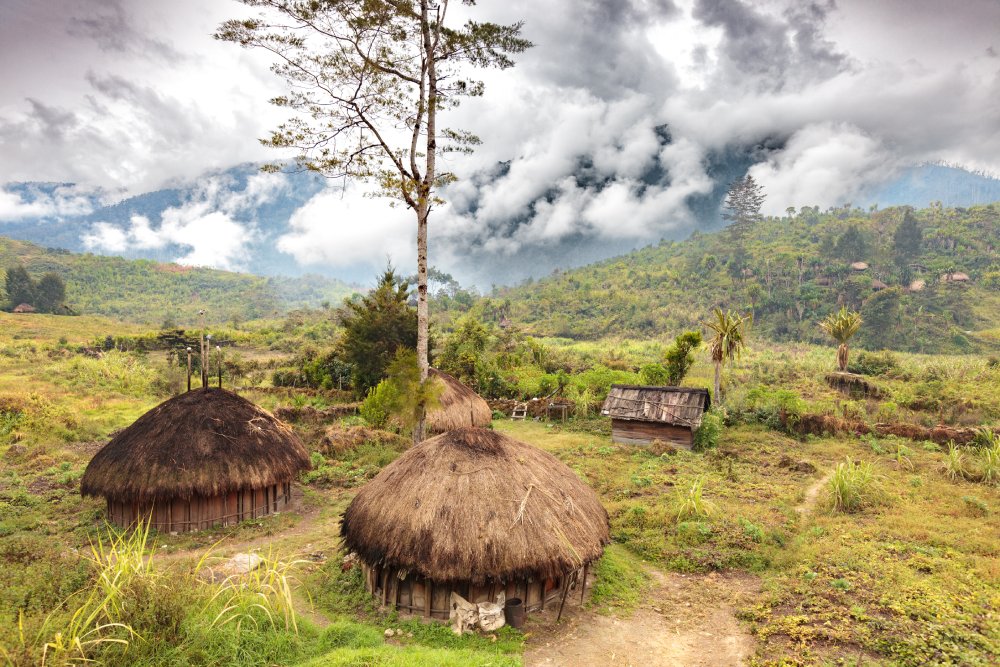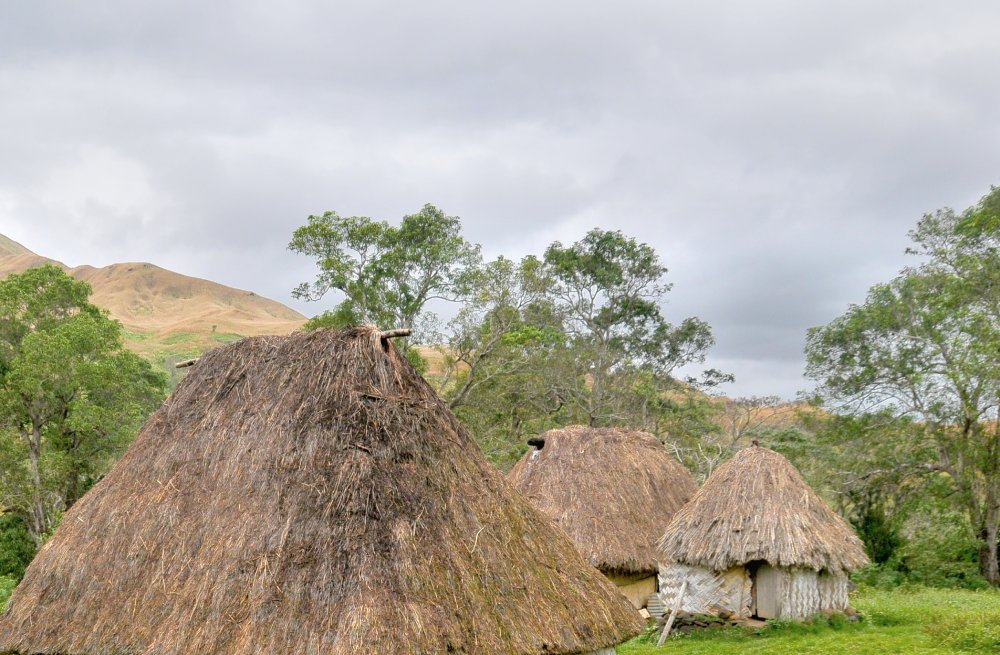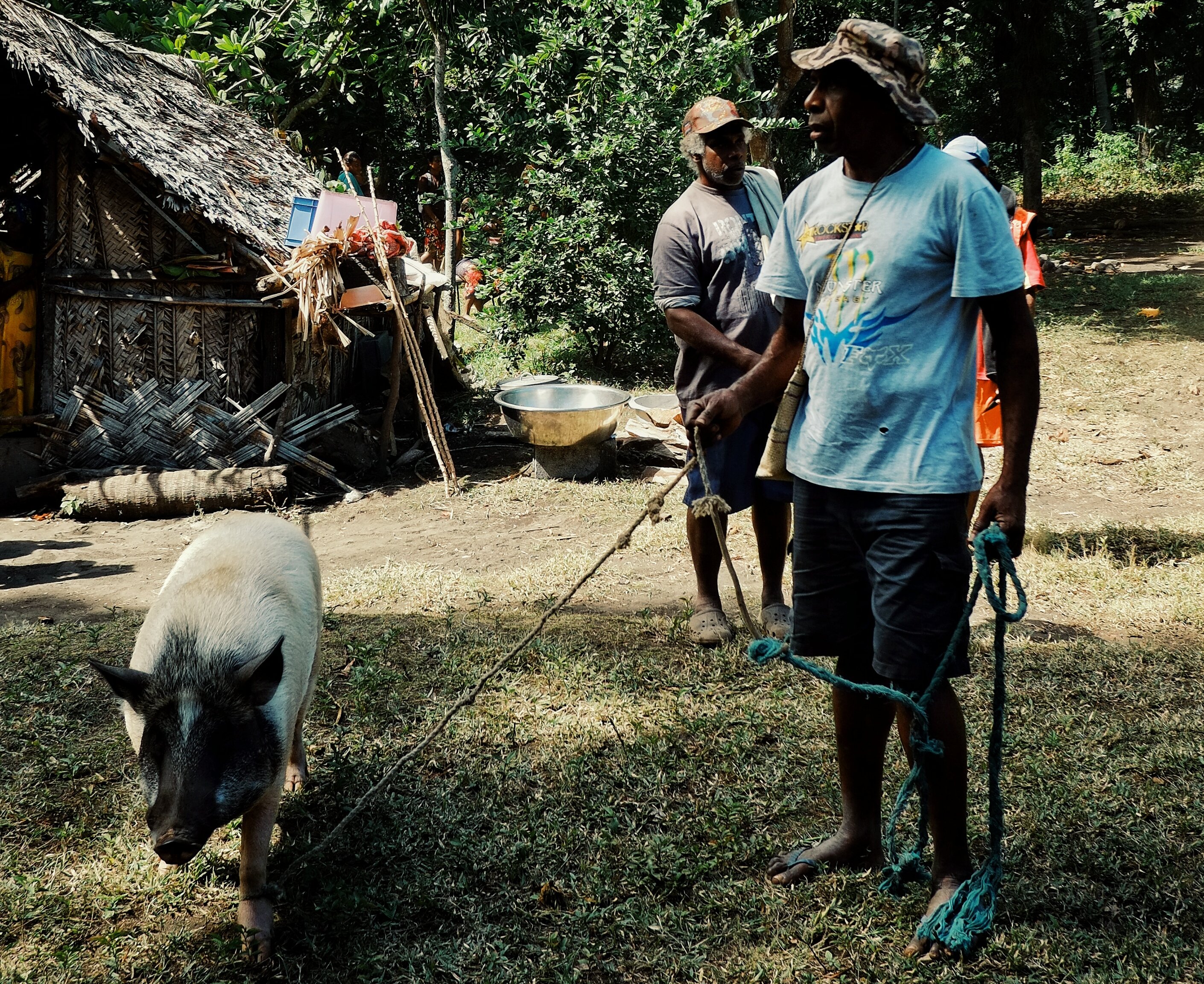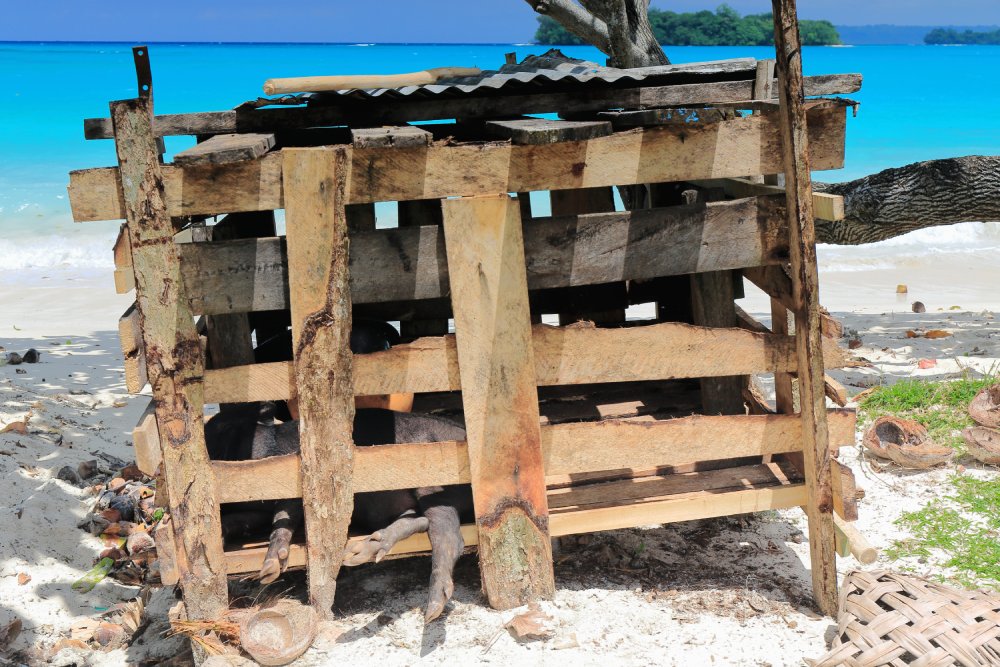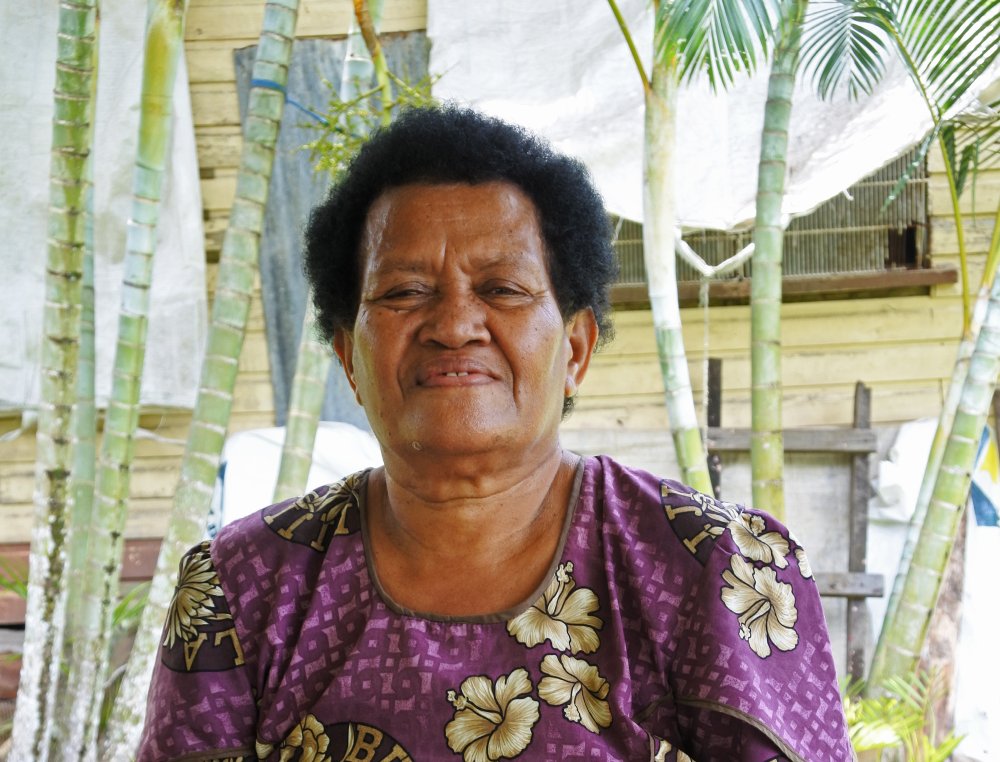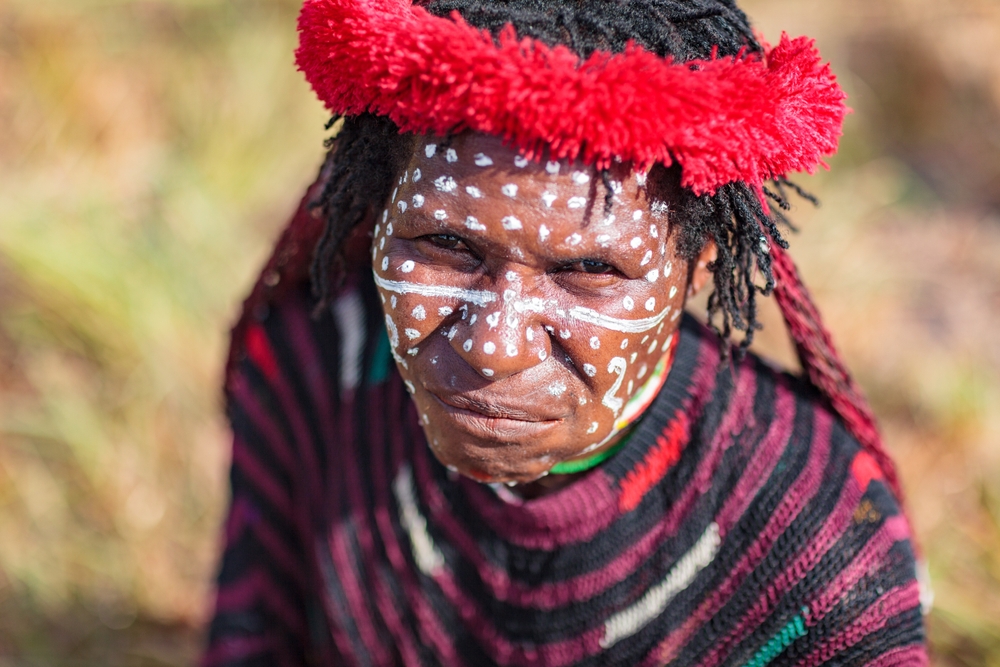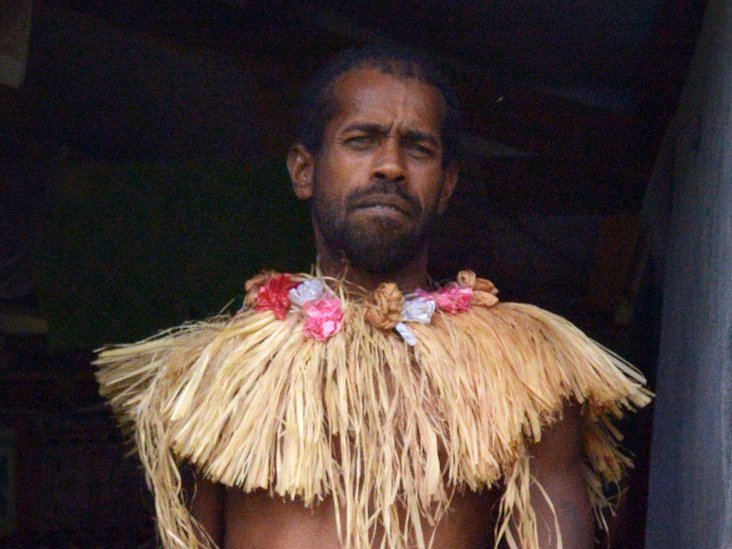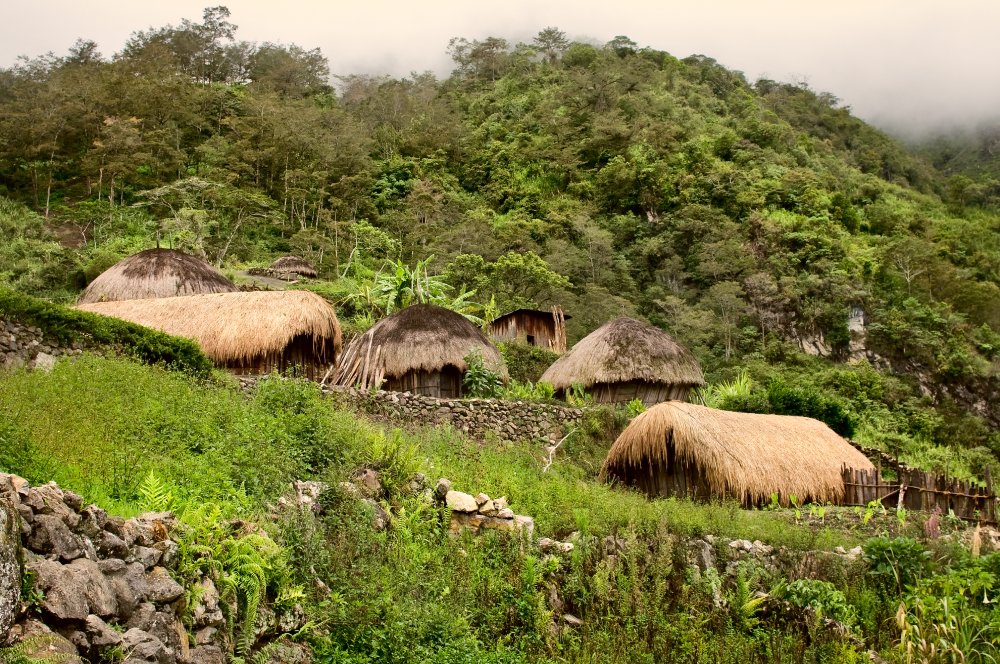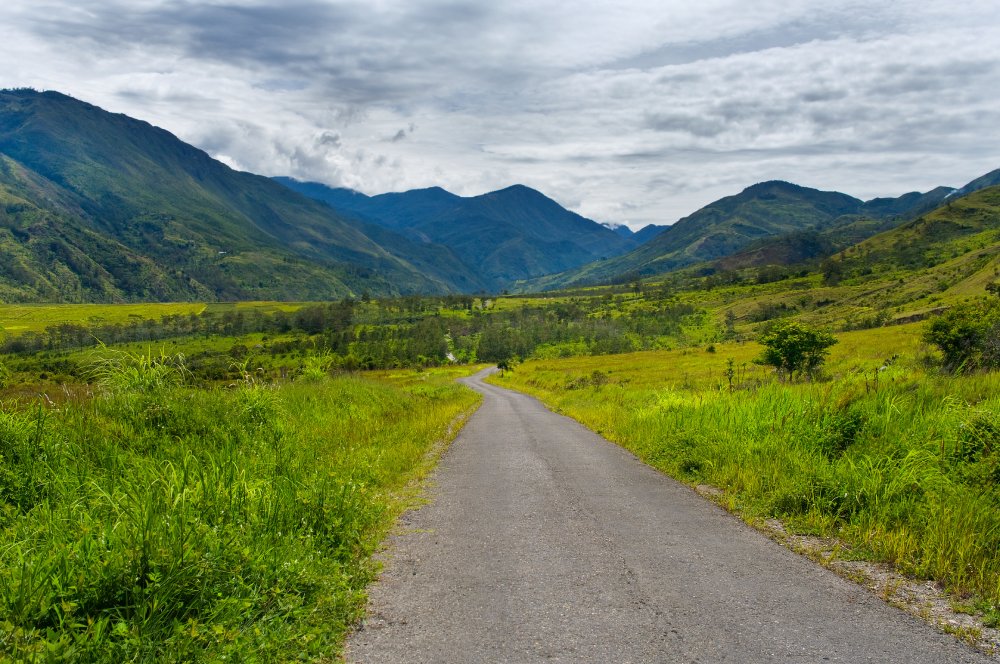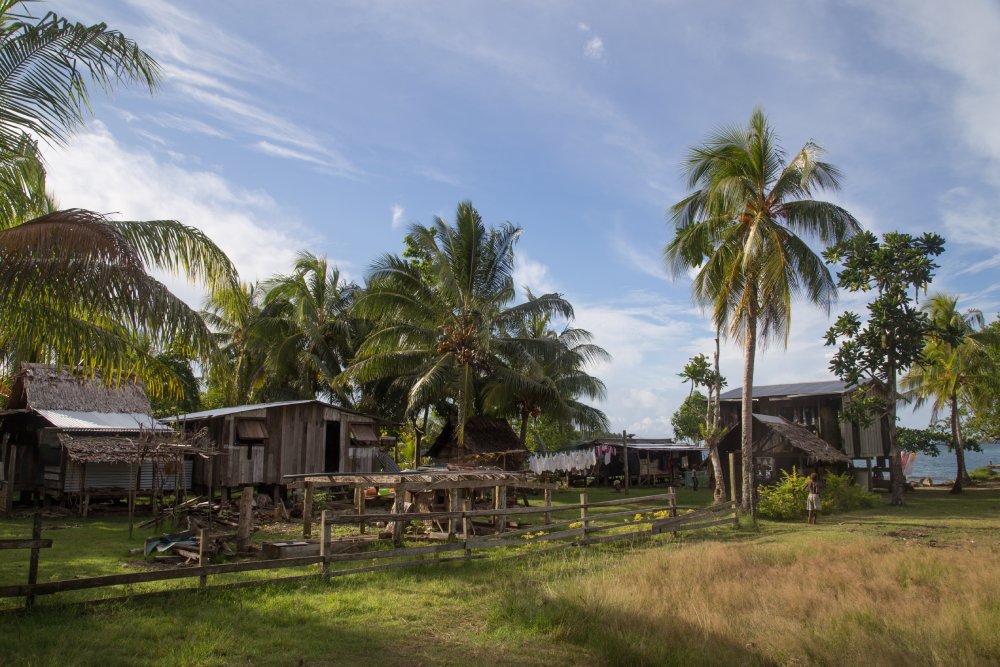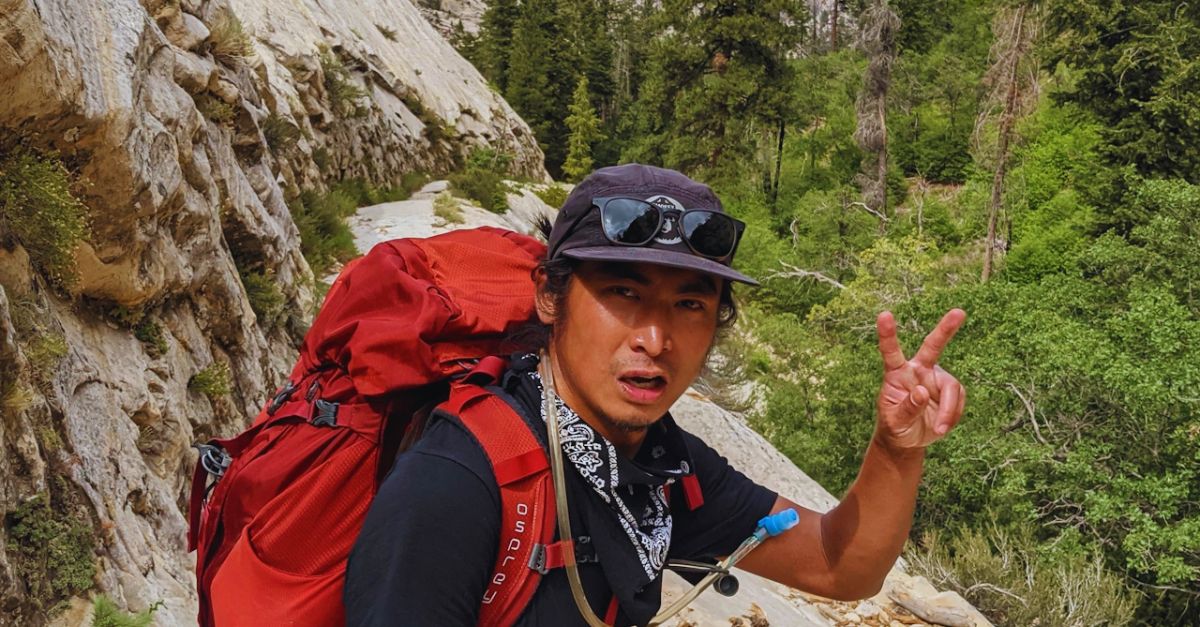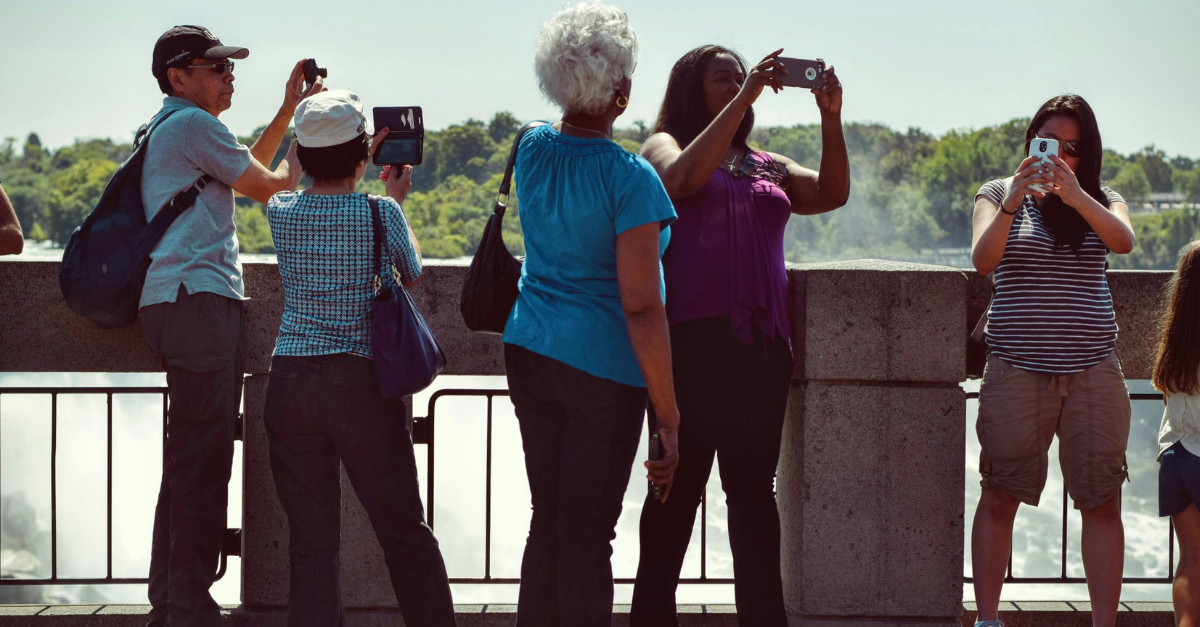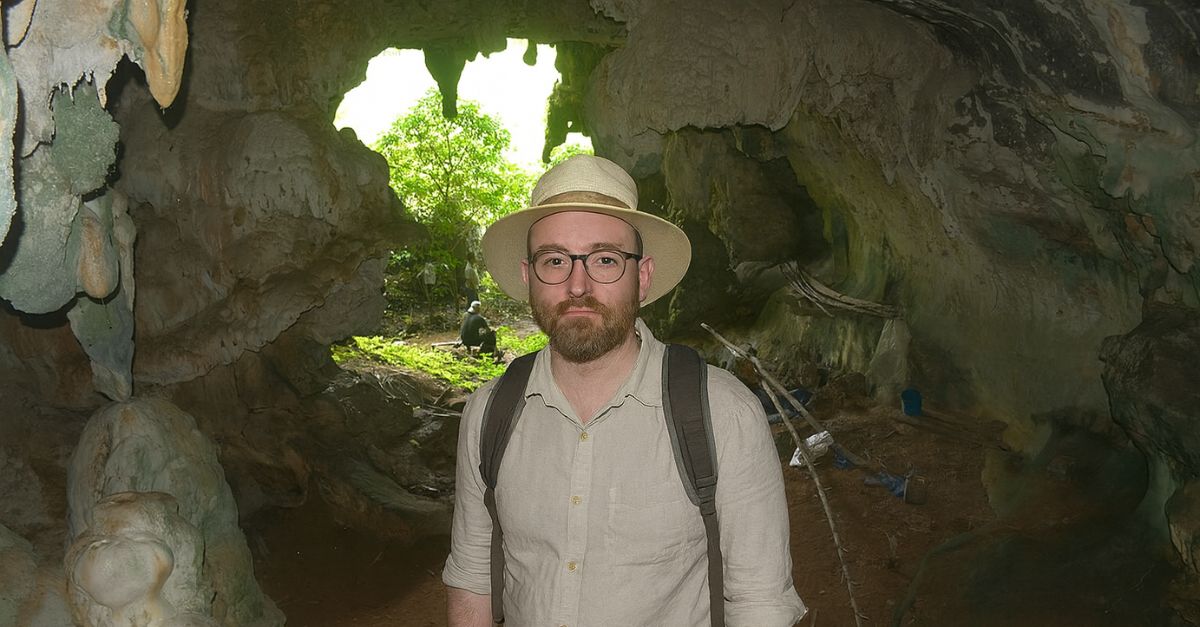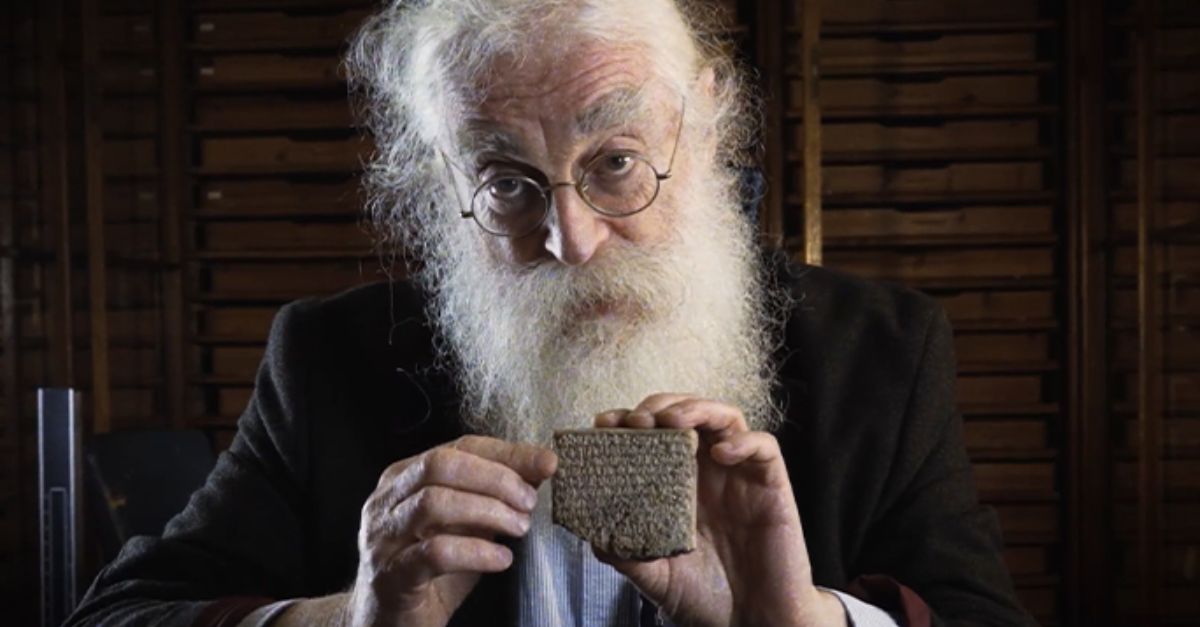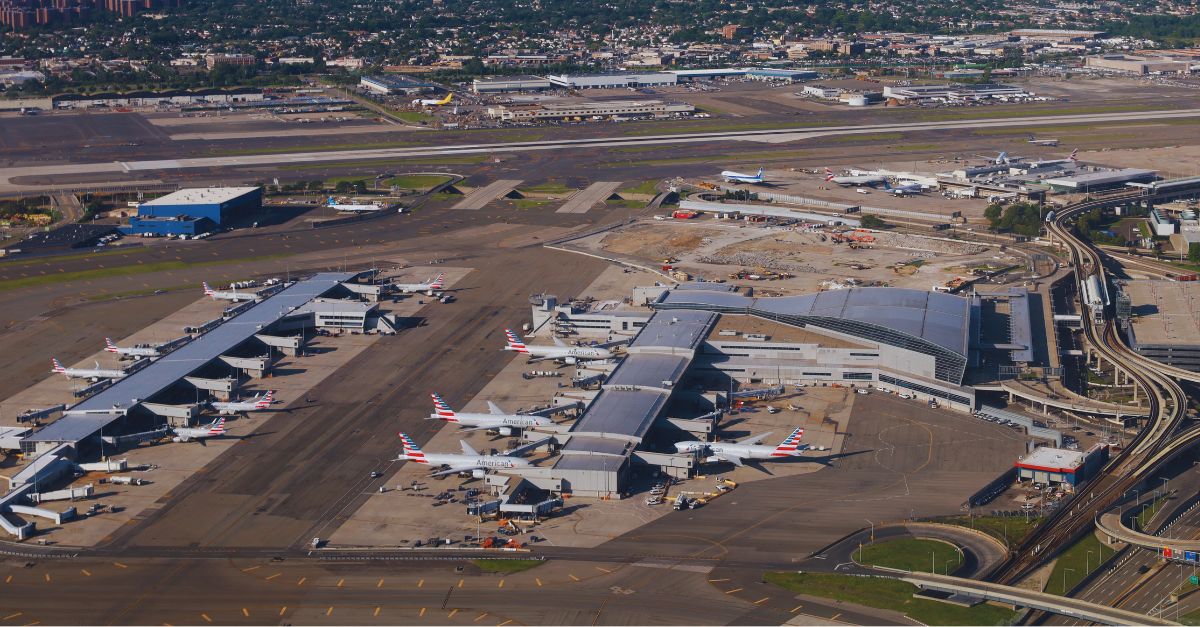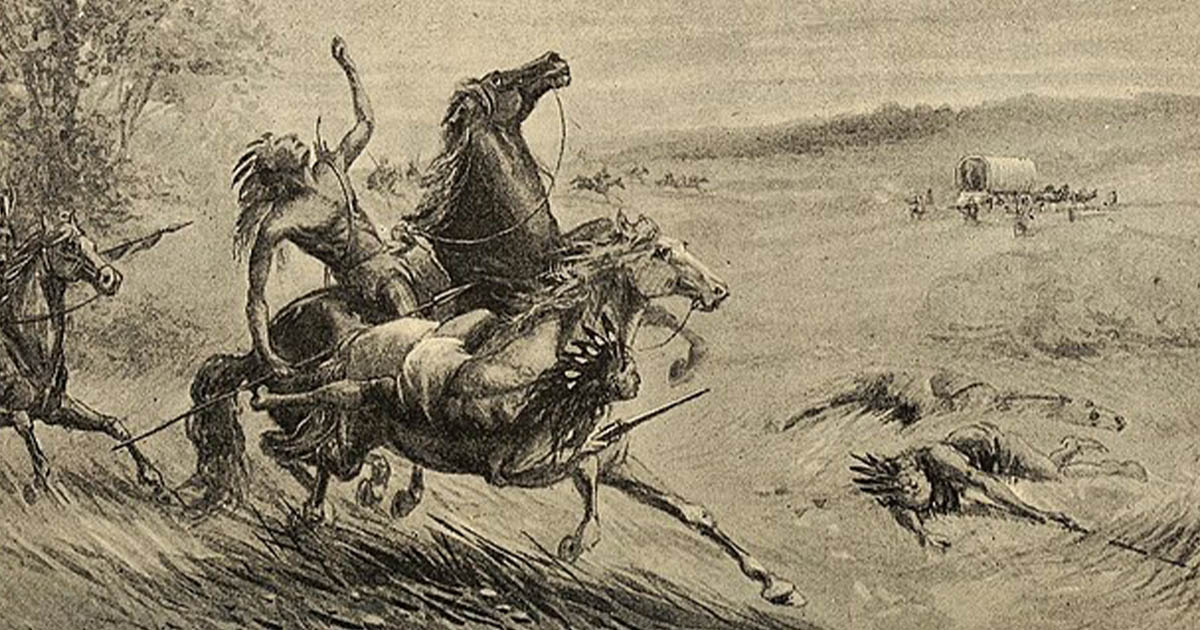The Melanesians
To the north and east of Australia lies a beautiful, tropical paradise known as Melanesia. Aside from being one of the world’s biodiversity hotspots, these rich archipelagos form one of the most culturally complex regions of the entire world.
Not only are Melanesian people distantly related to an extinct human species, they also have century-old traditions that make them completely unique from the rest of the world—and many of them are still practiced today.
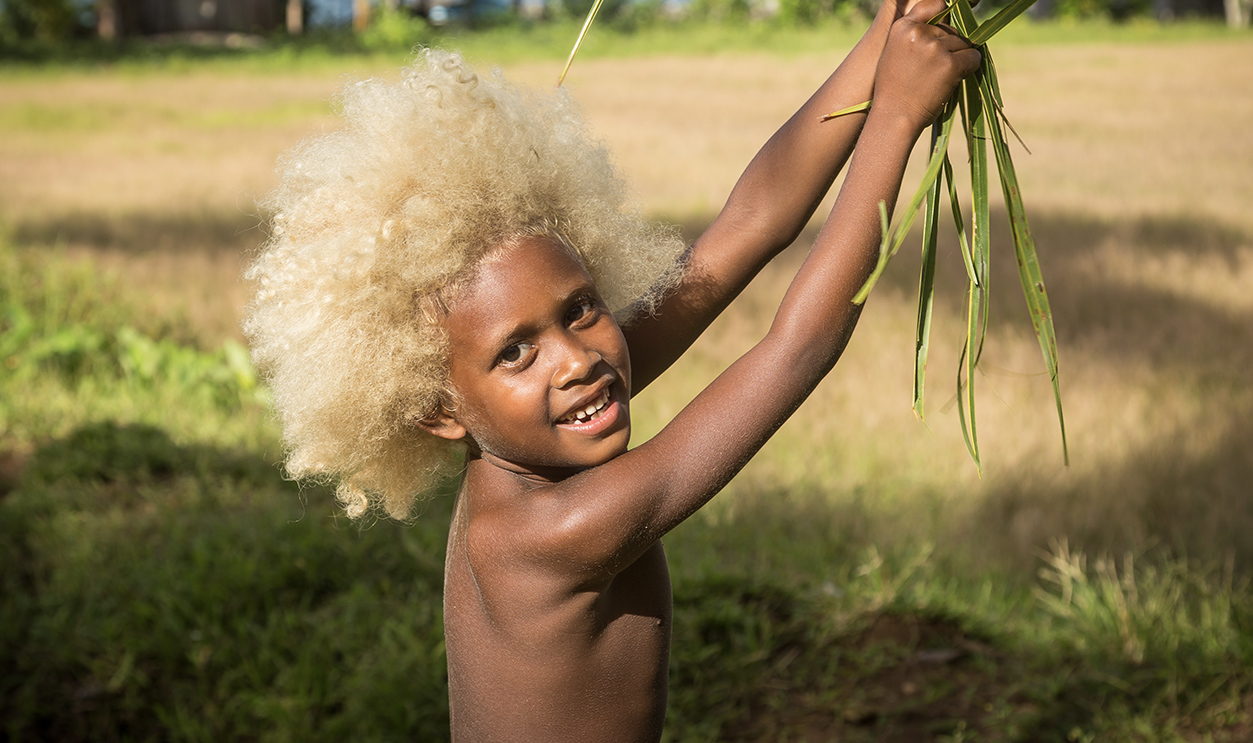
Where is Melanesia?
Melanesia is a subregion of Oceania in the southwestern Pacific Ocean, and is home to six countries: Indonesia (the eastern part), Papua New Guinea, the Solomon Islands, Vanuatu, New Caledonia, and Fiji.
With a total land area of about 1 million square kilometers, the region of Melanesia is larger than many people think—and its culture is unlike any other.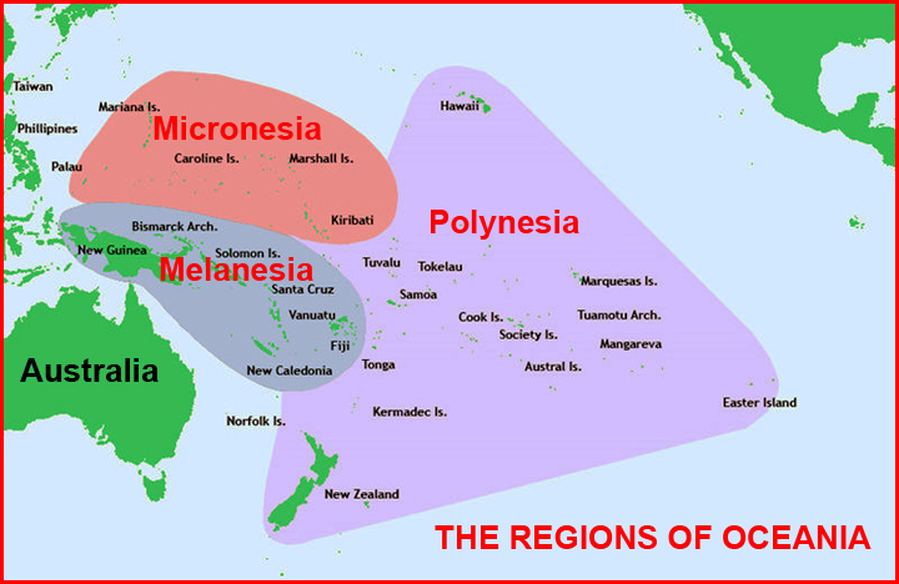
What Languages Are Spoken In Melanesia?
The Melanesian islands form one of the most culturally complex regions of the entire world, with a whopping 1,293 languages spoken. Most speak one of the many languages of the Austronesian language family, or one of the many unrelated families of Papuan languages.
How Big Is The population?
Given the region is that of great antiquity—with some areas settled already 45,000 years ago—the population in 2025 is estimated to be over 13 million, based on United Nations estimates.
The largest and most populous Melanesian country is Papua New Guinea, with over 8 million people as of 2023.
And although their population may be high today, their cultural practices remain as traditional as they come.
Who Lives In Melanesia?
The Indigenous people who live on the islands of Melanesia are called Melanesians. They’re made up of different genetic groups and ethnicities—who also have an array of different cultural practices.
The name Melanesia etymologically means "islands of black", in reference to the dark skin of the inhabitants—which likely stems from the people’s distant and distinctive ancestry.
There have been a lot of studies done on the various groups living in Melanesia, as well as their neighbors in Micronesia and Polynesia. And while many theories have come and gone, more recent genetic testing tells a rather intriguing story of who Melanesian people today may have descended from.
Who Do Melanesians Descend From?
As you may know, modern-day humans are referred to as Homo sapiens. And while we may be the only humans left on Earth today, about 70,000 years ago, there were at least four different species of humans—Homo Sapiens, Homo Neanderthalensis (Neanderthals), Homo floresiensis, and Denisova hominins.
Genetic testing has now found that many Melanesians today share strong genetic DNA with one of the now-extinct archaic human species.
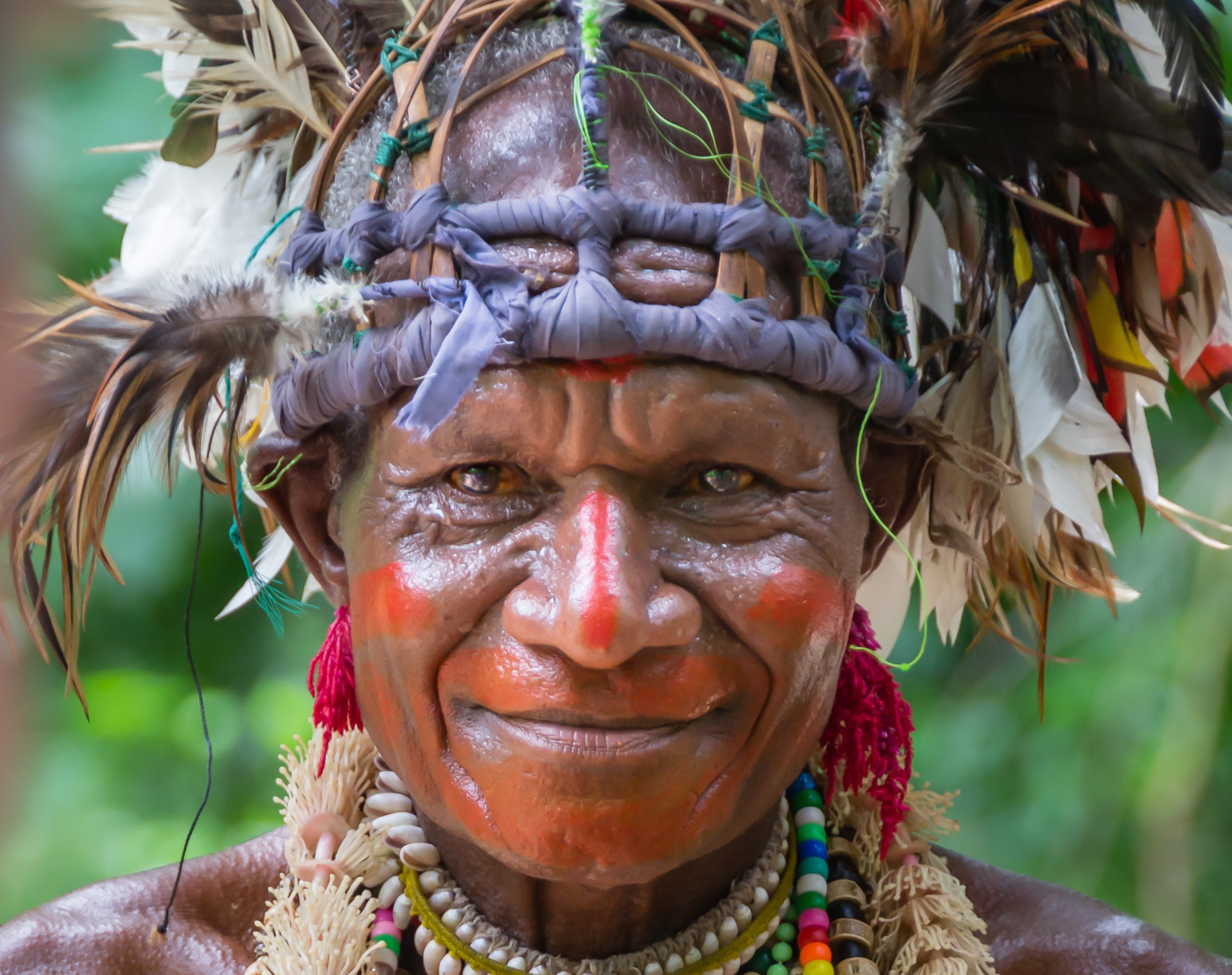 Tetyana Dotsenko, Shutterstock
Tetyana Dotsenko, Shutterstock
Which Species Do Melanesians Descend From?
Of course, we can all trace our DNA back to ancient human species—that’s how evolution works. But recent studies suggest that Melanesians are the only known modern humans whose prehistoric ancestors interbred with the Denisova hominin—the ancient cousin of the Neanderthal.
This interbreeding of different human species is said to be a possible explanation for one very unique characteristic that many ancestral Melanesians had—and many still have today.
What Do Melanesians Look Like?
Since ancient Melanesian descendants ultimately migrated from Africa, they are known to have darker skin. But their unique hair color is something that has had people talking for years. Melanesians are one of the few non-European peoples, and the only dark-skinned group of people outside Australia, known to have blond hair.
This unique characteristic often has people speculating that perhaps their golden locks are a result of their environment, or the foods they eat. But none of that would actually make sense.
It’s actually caused by the TYRP1 gene—which is unique to these people, and is not the same gene that causes blond hair in Europeans. It typically darkens as they get older.
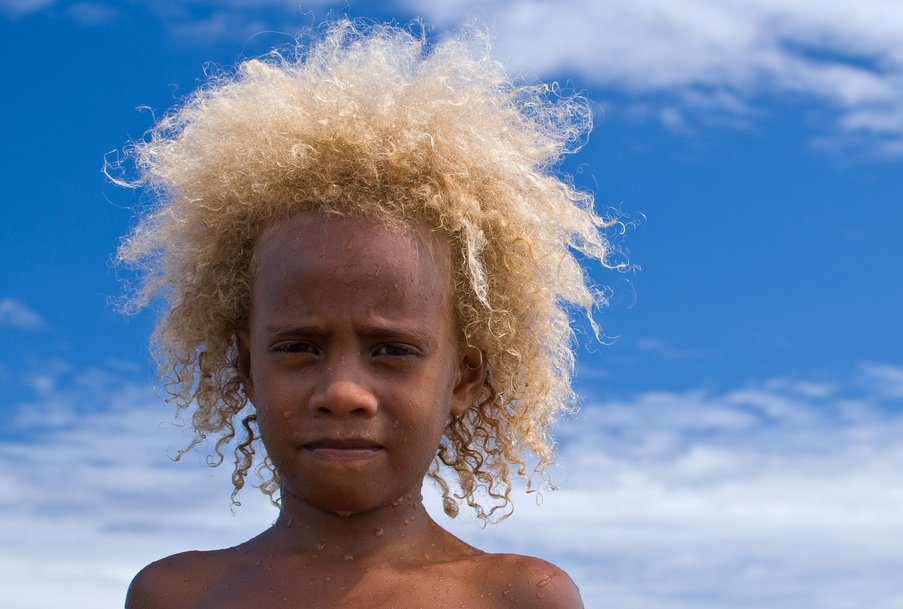 Graham Crumb, CC BY-SA 2.0, Wikimedia Commons
Graham Crumb, CC BY-SA 2.0, Wikimedia Commons
What Is So Intriguing About Their Culture?
Historically, several different cultures mixed, leading to many complex genetic, linguistic, and cultural changes among the entire population. But even still, the Melanesian culture has remained as traditional as they come—which continues to intrigue anthropologists today.
Something the Melanesian people are really good at is intertwining new-age elements into their traditional practices. Keeping tradition alive is very important to them, and they do their best to avoid any major modern changes.
In fact, some parts of Melanesia have made strenuous efforts to resort back to customary, pre-colonial village law and practice—opposing Western influence.
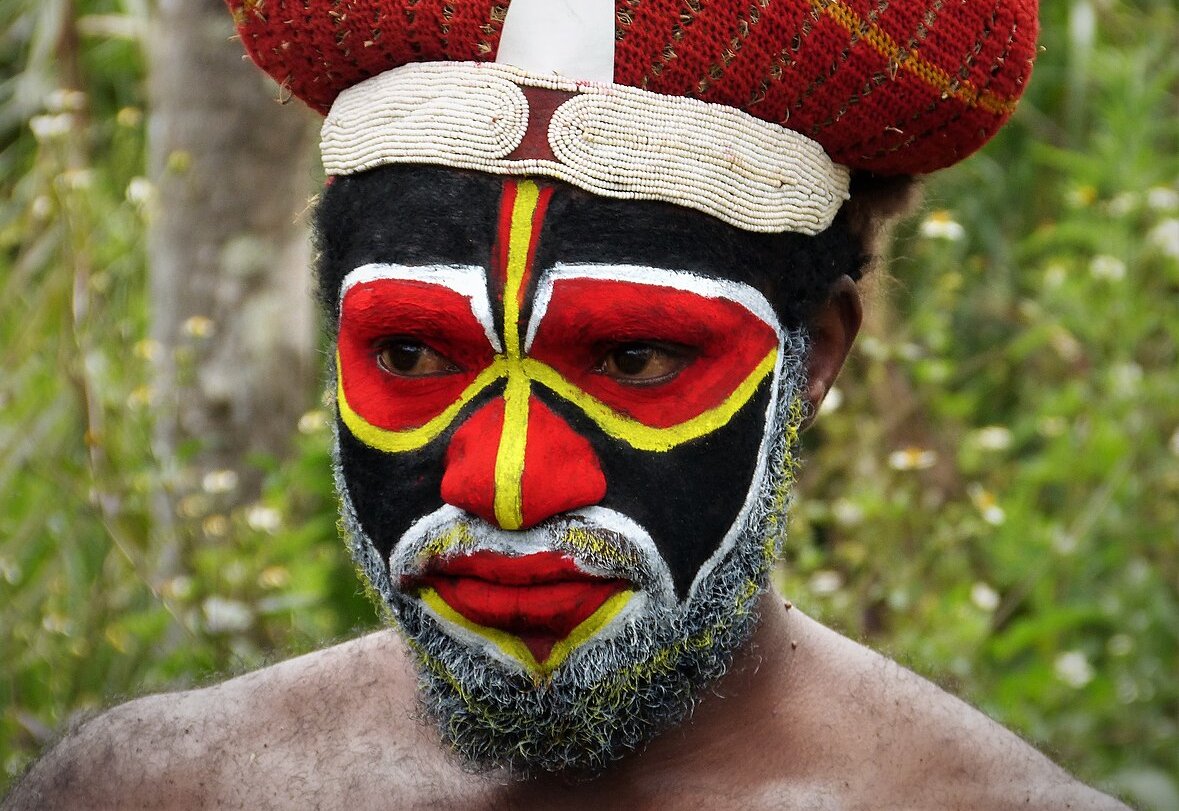 gailhampshire, CC BY 2.0, Wikimedia Commons
gailhampshire, CC BY 2.0, Wikimedia Commons
What Was Their Traditional Way Of Life?
Many rural Melanesians continue to live their traditional hunting and gathering lifestyle, adapting to the tropical rainforest. Their culture puts a great importance on their duty to care for the environment—creating a strong attachment of the people to the land.
So, it’s no surprise that Melanesians are incredibly skilled when it comes to living off the land. Hunting, gathering, farming, fishing—you name it, they practice it. Except, their ways are a little different than what you might find in America.
What Are Their Traditional Farming Techniques?
The most common farming technique they use is natural fallows, with fallow vegetation being burnt, allowing the soil to restore fertility for the next crop.
They also keep various livestock, depending on their location. About 15% of rural households in Melanesia raise cattle, goats, and sheep. Small island areas also have pigs and chickens, and some places, like Fiji and Tonga, raise horses for meat.
How Does Farming Benefit Them?
Aside from providing them with food, farming is very important to Melanesians as many smaller villages and rural communities rely on farming to provide them with an income flow and social status. The bigger and better the farm, the more money they make, and the higher they are on the social ladder.
Traditionally, animal hides were also used for making clothing and shoes. Virtually no part of an animal was wasted.
What Do They Eat?
Most Melanesians today are rural villagers and their most important food is some combination of sweet potato, Colocasia taro, yam, Xanthosoma taro, and banana. But they also harvest many other vegetables and gather various fruits and roots from their local environment.
Up until a century ago, most of Melanesia still lived completely off the land and sea.
Do They Have Access To Modern Farming Techniques?
Even though modern amenities are somewhat available today, Melanesian villagers prefer to keep up with their organic production practices—basically agreeing to continue to freely and jointly care for community gardens to ensure traditional farming practices don’t die out.
In most villages, farming and gardening remain a group effort that they’re happy to participate in.
What Are Their Villages Like?
Traditionally, in many areas of Melanesia, local groups lived in scattered homesteads rather than villages. These settlements were usually temporary, as they moved to follow cultivation cycles. More permanent settlements existed too, however, usually just in the coastal environments.
Today, most settlements are permanent, even in rural areas.
What Are Their Houses Like?
Traditional homes are typically made of bamboo, thatch, and wood, and are raised off the ground on stilts to prevent flooding and improve air circulation.
Modern homes are constructed with more modern materials such as concrete, imported timber, and roofing iron, and are designed with large windows.
Both traditional and modern homes exist all across Melanesia today—but there is one modern amenity that is still not as readily available.
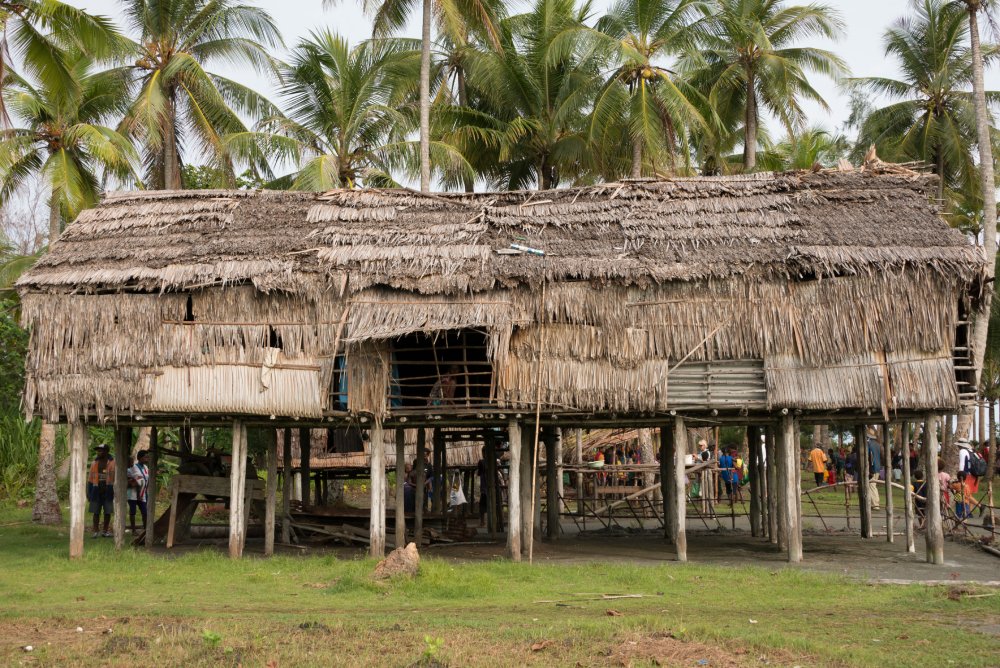 Cindy Miller Hopkins/Danita Delimont, Adobe Stock
Cindy Miller Hopkins/Danita Delimont, Adobe Stock
Do Their Homes Have Utilities?
In almost all rural areas, access to electricity and running water is extremely limited. Many people rely on local streams, rivers, and rain barrels, and use a good old-fashioned flame for heat and light.
However, modern homes in populated areas usually have at least some utilities, especially solar panels, which are more common today—for those who can afford them.
What Do They wear?
Traditional Melanesian clothing is still often worn by locals in rural communities. But in the more modern communities, traditional fashion is usually only worn during ceremonies, rituals, and festivals.
And while the styles and materials can vary by specific location, there are a few shared ideas that remain popular today.
The Grass Skirt
Traditionally, Melanesian cultures used strips of natural fibers, barks, leaves, and other materials to create various types of grass skirts. Both men and women, old and young, wore these skirts as everyday clothing.
During rituals and ceremonies, the skirts would be adorned with shells, beads, and feathers.
Kastom Dresses
Kastom dresses are another significant cultural piece. These dresses were made from bark cloth or woven fibers, and featured bold patterns and colors inspired by nature and ancestral legends.
And they usually accessorized with something equally as beautiful.
Bilum Bags
Bilum bags originated from Papua New Guinea, and are also intricately woven using natural fibers, plant-based materials or wool. These bags are versatile, and used for everything from gathering roots, collecting fruit, storing building supplies, and everyday accessorizing.
They usually featured symbolic motifs and patterns that represented familial ties and spiritual beliefs. Each bag is handmade, and unique to the maker.
What Do They Wear Today?
Some Melanesians today have access to more modern clothing and materials, but they still put an emphasis on bold prints and vibrant colors in keeping with tradition.
Handcrafted jewelry is also still very common, using primitive materials like shells, seeds, and bone. Large statement necklaces, earrings, and rings are popular, as well as large feather headdresses—and something else that is unique to their beliefs.
Body Art
In many places of Melanesia, especially New Guinea, the body itself is a focus for art. Locals regularly adorn their bodies with intricately painted designs, wigs and headdresses, and elaborate, colorful costumes—but their artistic nature extends further than just their appearance.
Melanesians may be slowly giving in to the modern world, but something they hold very close is their traditional art forms. For them, art is not just expressive, it is also a form of communication—especially when they bring out the masks.
What Are Masks Used For?
Melanesian masks are a focus of creativity, but they also serve a very important purpose. They’re often used in elaborate ceremonials, with masked figures impersonating mythical beings or dramatizing cult secrets.
Dance, music, and storytelling remains an important aspect of their traditional belief system—even after Christianity took over.
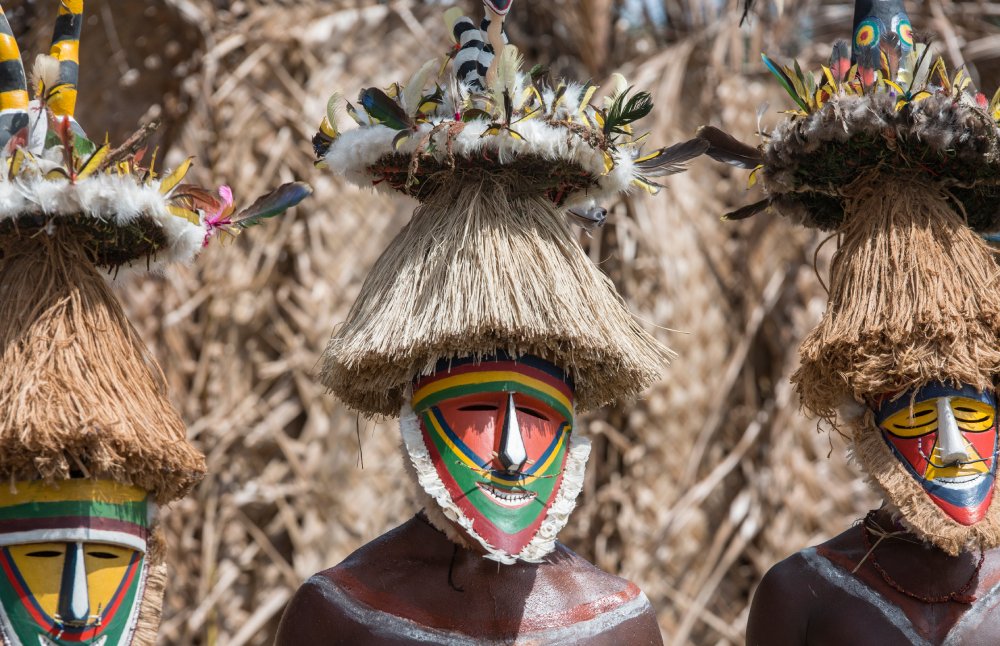 Ron van der Stappen, Shutterstock
Ron van der Stappen, Shutterstock
What Religion Do They Practice?
The religious side of things has changed for Melanesians over the years. Currently, the most common religion practiced is Christianity. But traditionally, their beliefs were more symbolic in nature.
And while much of their religion was practiced in artistic forms, such as dancing and chanting—there was one other religious practice that Melanesians today are thankful has phased out.
Cannibalism
Much like many other ancient cultures, Melanesians were once active cannibals—meaning they consumed human flesh. In fact, cannibalism in the entire region is very well documented as it actually continued well into the 21st century!
In fact, Melanesians were still practicing cannibalism in Papua New Guinea as recently as 2012.
How Common Was Cannibalism In Melanesia?
Let’s put it this way, cannibalism was so normal in Fiji that it was actually dubbed “Cannibal Isles”. It was a regular practice in the Solomon Islands too, so much so that human flesh was actually sold at local markets!
And, believe it or not, certain animals, such as dogs, were taboo to be eaten—but apparently humans were fair game.
Why Did They Eat Human Flesh?
Human cannibalism in Melanesia and Polynesia was said to be primarily associated with war—with victors eating the vanquished. But it’s also been said that in terms of hardship, cannibalism was used to avoid starvation.
In the early 20th century though, it was still being used for a variety of reasons, including retaliation, as an insult to an enemy, or to absorb the deceased person’s qualities—yikes!
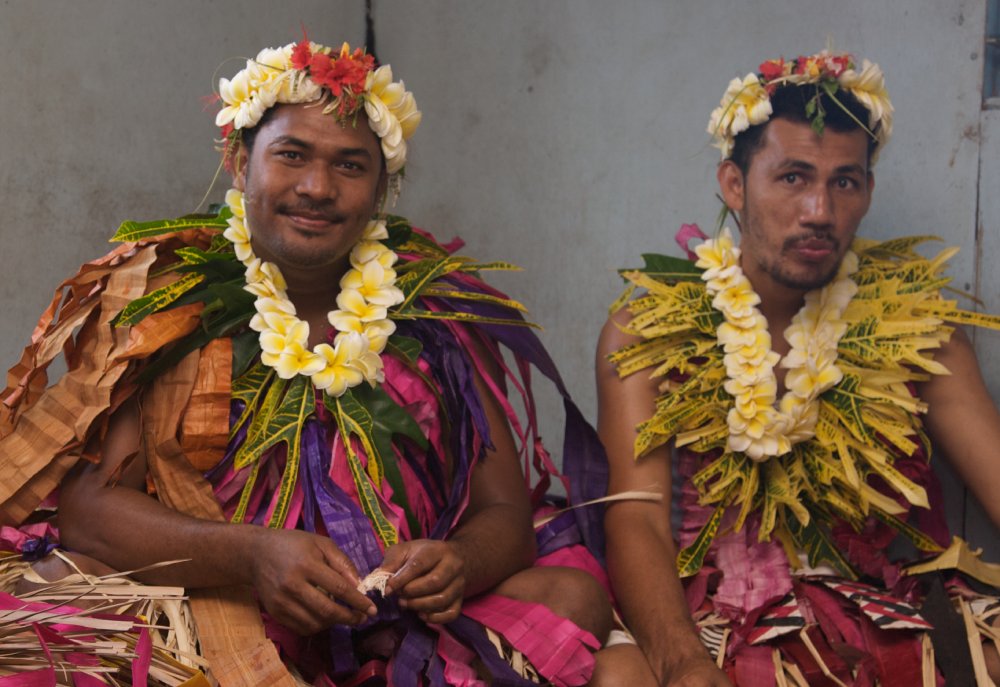 Peace Corps, Wikimedia Commons
Peace Corps, Wikimedia Commons
How Often Were People Eaten?
It depends on the location and the community. In southeastern Papua, the Korowai tribe was well known for their cannibalistic menu, and is said to be one of the last surviving tribes in the world to engage in cannibalism as an actual food source—with their last victim being in 2012.
However, in Fiji, a tribal chief is said to have consumed a whopping 872 people. He kept a record of his fleshy meals using a stone pile.
Cannibalism wasn’t the only shifty religious practice they had though.
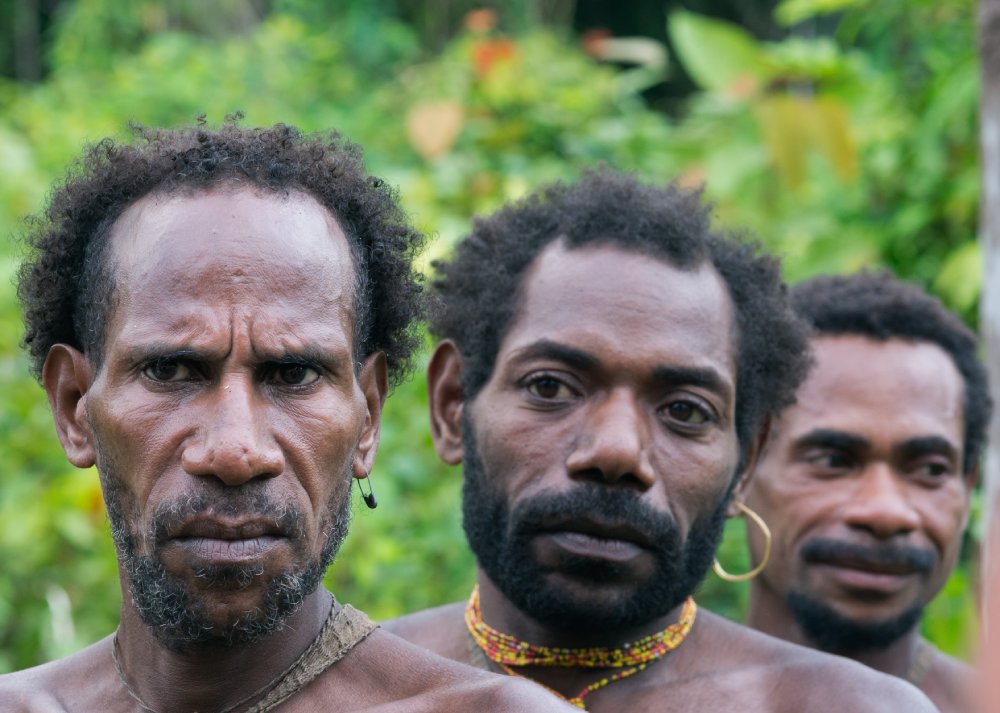 Sergey Uryadnikov, Shutterstock
Sergey Uryadnikov, Shutterstock
Cargo Cults
Eventually, in the late 19th century, colonization made its way to Melanesia. Foreigners arrived, and they brought an abundance of never-before-seen materials with them—specifically technology, weapons, and planes.
But the Melanesians had never seen this stuff before. So, they watched, learned—and then tried to replicate.
What Inspired Cargo Cults?
During World War II, many Melanesians saw foreign soldiers who never seemed to engage in any productive activities, like fishing, hunting, working the land, or crafting anything. All they did was march up and down, raise flags, chant anthems, and signal toward the sky.
And then—a large metal bird would fly overhead and drop all kinds of goods for them (AKA cargo).
To the Melanesians, the strange rituals the foreign soldiers did were causing the cargo to arrive—and they were determined to get the same result.
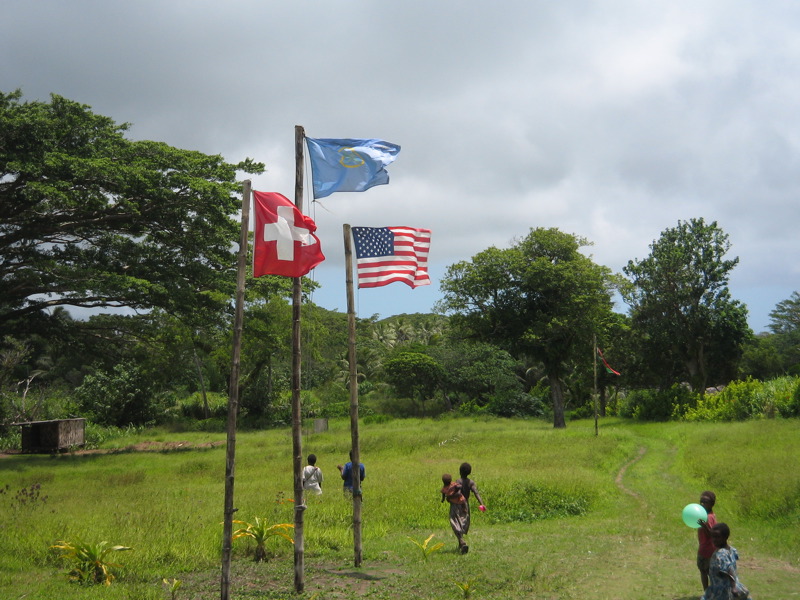 Charmaine Tham, CC BY 2.0, Wikimedia Commons
Charmaine Tham, CC BY 2.0, Wikimedia Commons
How Did Cargo Cults Work?
When the war ended and the soldiers left, the Melanesian chiefs began organizing ceremonies that mimicked the rituals of the troops. Participants would use broken materials left behind, like satellite dishes and other pieces of technology, to further appease their ancestors—who they believed played a role in the process.
Cargo cults became increasingly popular, even though they didn’t actually yield any results. It wasn’t until 1945, these remarkable religious movements became known outside of Melanesia as “cargo cults,” and by then, they became about much more than just material goods.
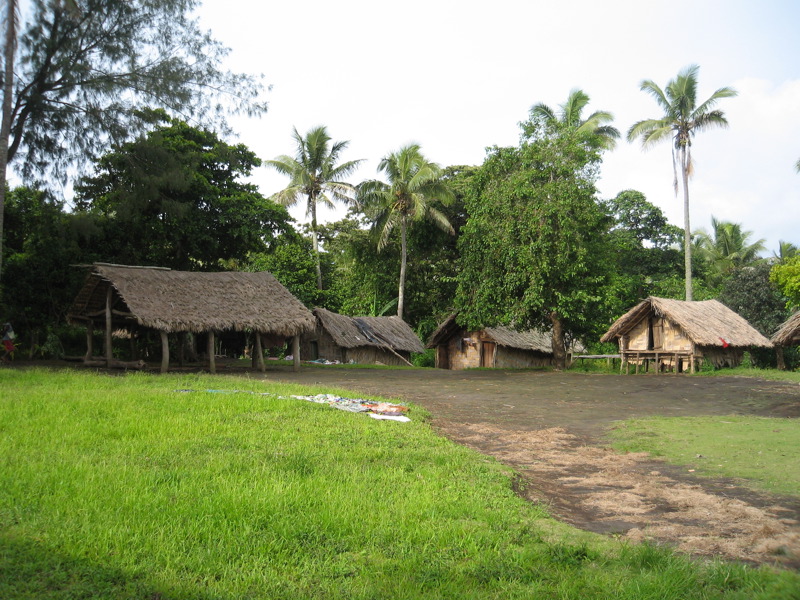 Charmaine Tham, CC BY 2.0, Wikimedia Commons
Charmaine Tham, CC BY 2.0, Wikimedia Commons
What Did Cargo Cults Become?
Even though the cargo cults didn’t bring them any goods, Melanesians continued them as a way to assert power, and keep their culture alive after various colonial and military interventions took over their land and coaxed or forced them into slave labor.
This is when keeping their tradition alive became most important—and how their society was run was another big part of it.
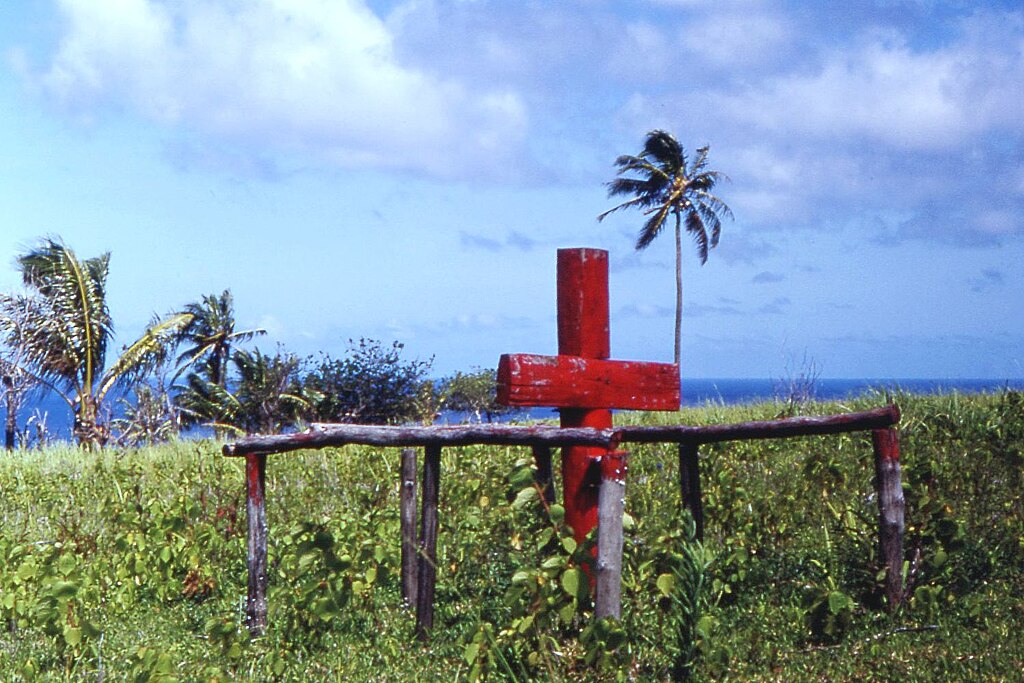 Tim Ross, CC BY 3.0, Wikimedia Commons
Tim Ross, CC BY 3.0, Wikimedia Commons
What Was Traditional Melanesian Society Like?
Much like in the modern world, traditional Melanesian society depended on how much wealth a person, family, or group could amass. Large plots of land and a prosperous farm would often equate to a higher social status—and there was one sure-fire way to get it.
What Was Marriage Like?
Most traditional Melanesian marriages were polygynous—meaning a man would often have two or more wives. More wives meant more children, which meant more labor, and therefore the ability to accumulate more wealth.
Not only did this type of marriage help improve income and social status, it also served as an important tool for something else.
How Did Polygynous Marriages Help People Thrive?
Aside from creating larger families, polygynous marriages were a way to gain political alliances. Men with many wives were seen as more powerful.
Political leadership often went to those who had proven entrepreneurial success, or who had gained prestige through war. But it was also passed down in families—so the larger the family you had, the better the chances of keeping leadership in the family.
How Were Traditional Societies Organized?
Traditional societies in New Guinea were organized on a patrilineal basis, whereas societies on the smaller Melanesian islands were generally matrilineal. But the principle that a person’s first loyalty should be to their family was universal throughout the region.
More importance was placed on gender roles, than familial ties, though.
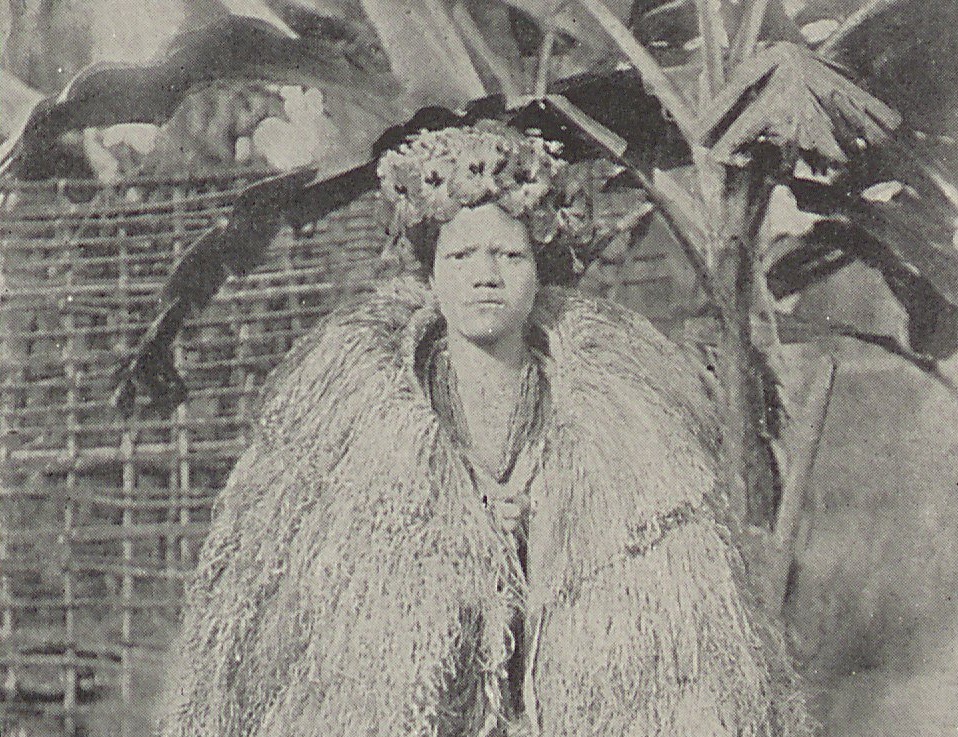 National Library of Poland, Wikimedia Commons
National Library of Poland, Wikimedia Commons
What Were Traditional Gender Roles In Melanesia?
Much like most other tribal cultures, Melanesian men and women typically had different roles within the community. And many of these roles and practices still ring true today.
Women are often responsible for food preparation (including farming, harvesting, cooking, and clean up), child rearing, and most other domestic chores.
Men are responsible for fishing, hunting, building, and battle. But their duties are not the only things their gender defines.
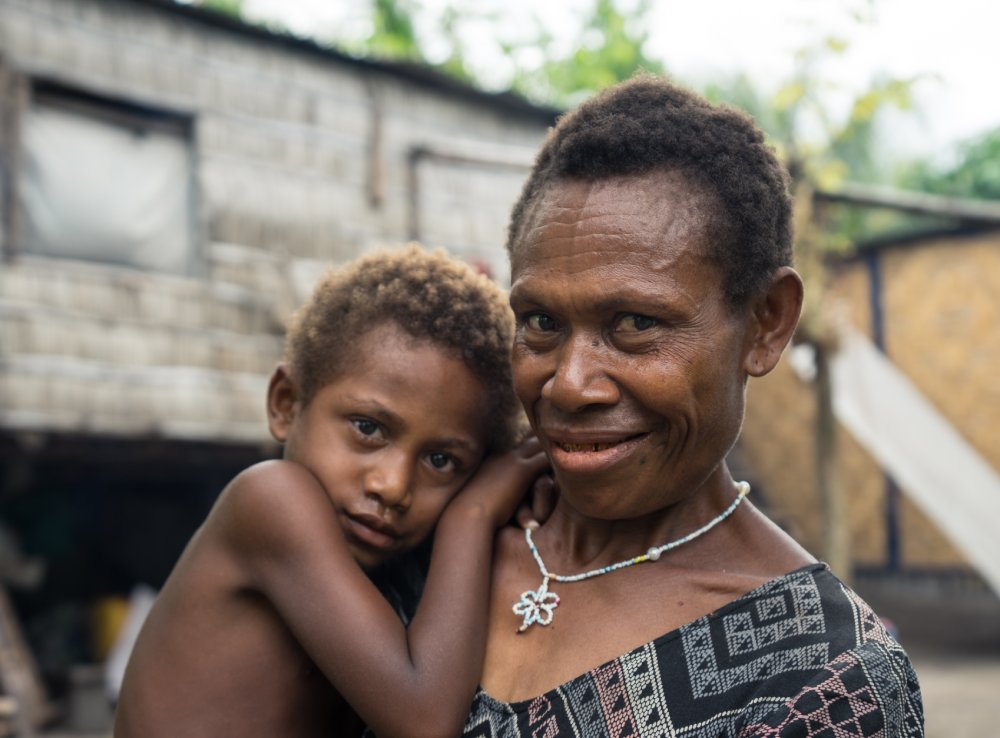 The Road Provides, Shutterstock
The Road Provides, Shutterstock
How Do Their Genders Affect Their Jobs?
Melanesian women are often given great importance in rituals and as healers, elders, and ancestors. And men were able to gain power and prestige in a number of ways.
When a man becomes a highly influential individual in his tribe, he becomes known as a “big man”. They don’t necessarily need to have formal tribal authority or a large amount of wealth—they simply need a large following of other tribe members.
Gaining followers wasn’t all that difficult, considering their intriguing living arrangements.
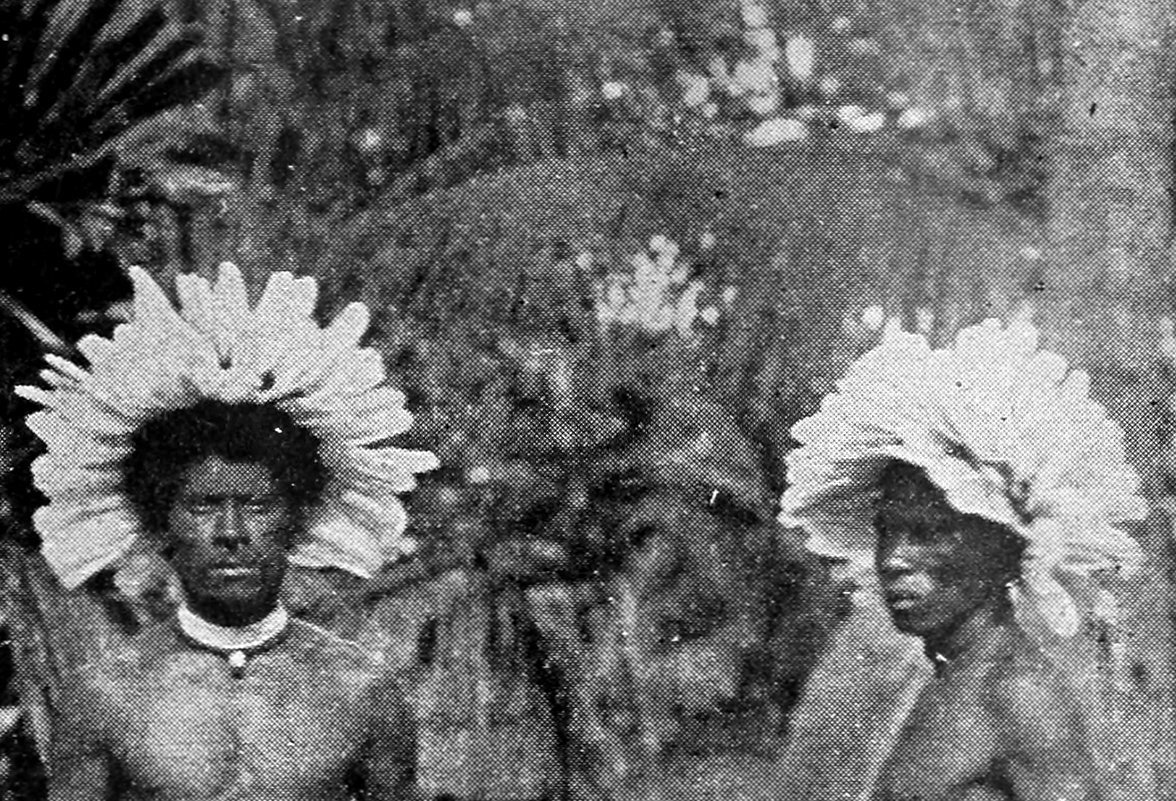 Bronisław Kasper Malinowski, Wikimedia Commons
Bronisław Kasper Malinowski, Wikimedia Commons
Where Did Men And Women Live?
In many parts of Melanesia, men and women did not live in the same home, they were purposely separated. Women and children typically lived in their domestic dwellings, while men would live in communal housing with other men.
While this may not sound all that shocking yet—the reason for their separation might just be.
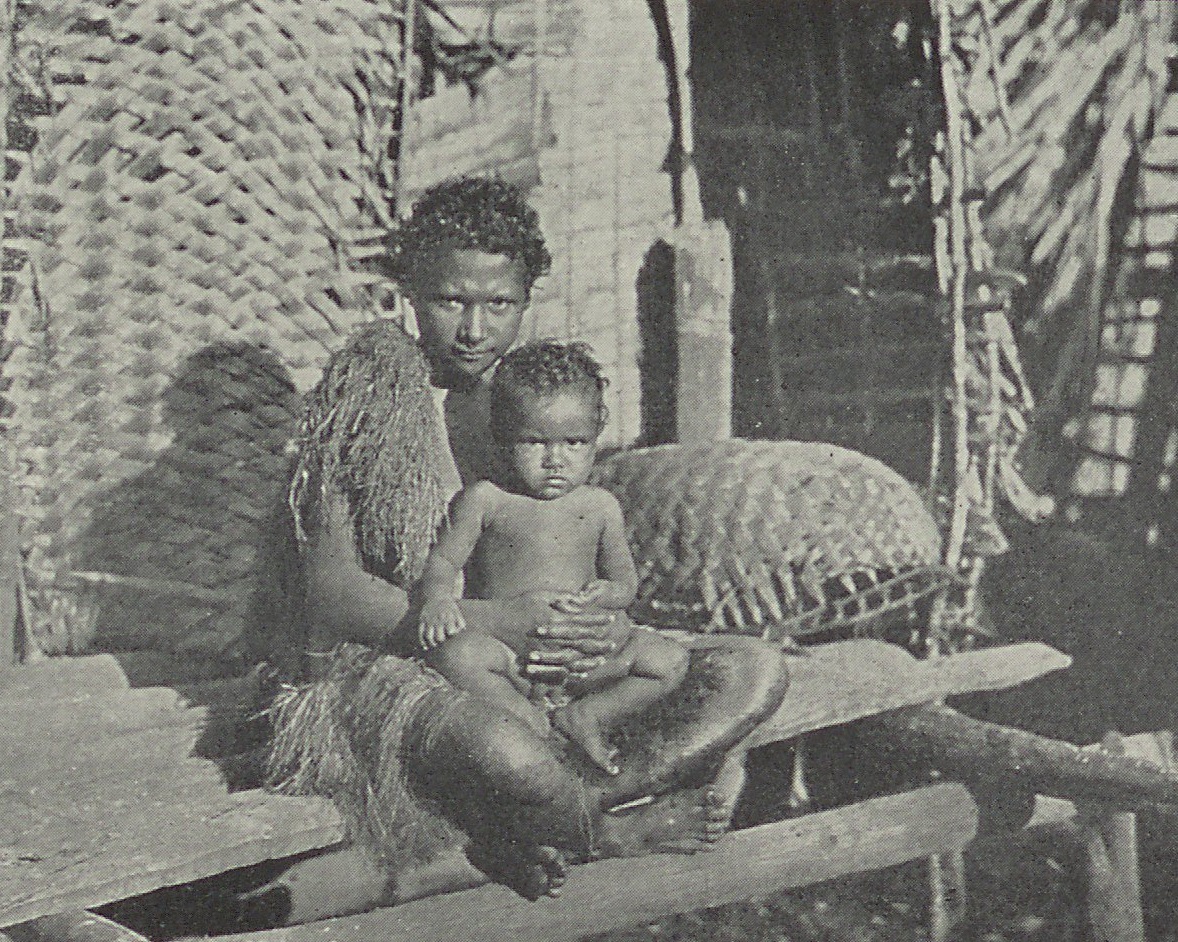 National Library of Poland, Wikimedia Commons
National Library of Poland, Wikimedia Commons
Why Were Men And Women Separated?
Men and women were often separated because it was strongly believed that their bodily fluids (the kind that usually goes hand in hand with intimacy) was regarded strictly as “agents of reproduction and growth”—which meant that they were powerful, and therefore dangerous, and needed to be controlled.
But this belief goes far deeper than this. And it brings us back to gender roles—particularly that of Melanesian men.
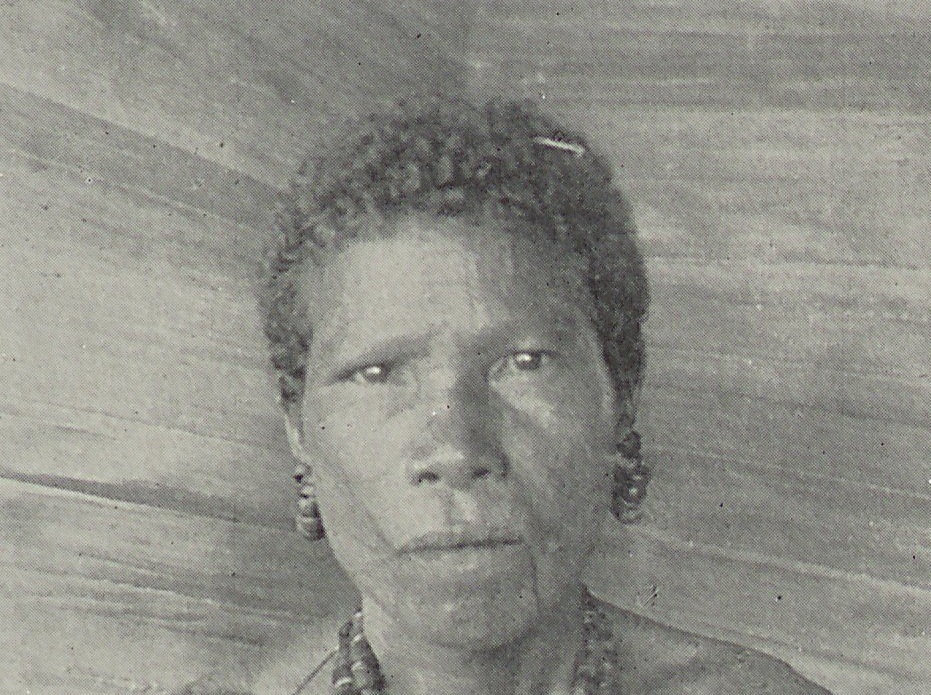 National Library of Poland, Wikimedia Commons
National Library of Poland, Wikimedia Commons
How Were These Dangers Controlled?
While women were given important jobs as healers and all-knowing elders, men were given the important job of ensuring the group’s metaphysical survival by engaging in activities meant to gain control over the dangerous things—like the bodily fluids.
In order to gain power over bodily fluids, the men would take part in “important” activities that only happened in their boys-only clubhouses.
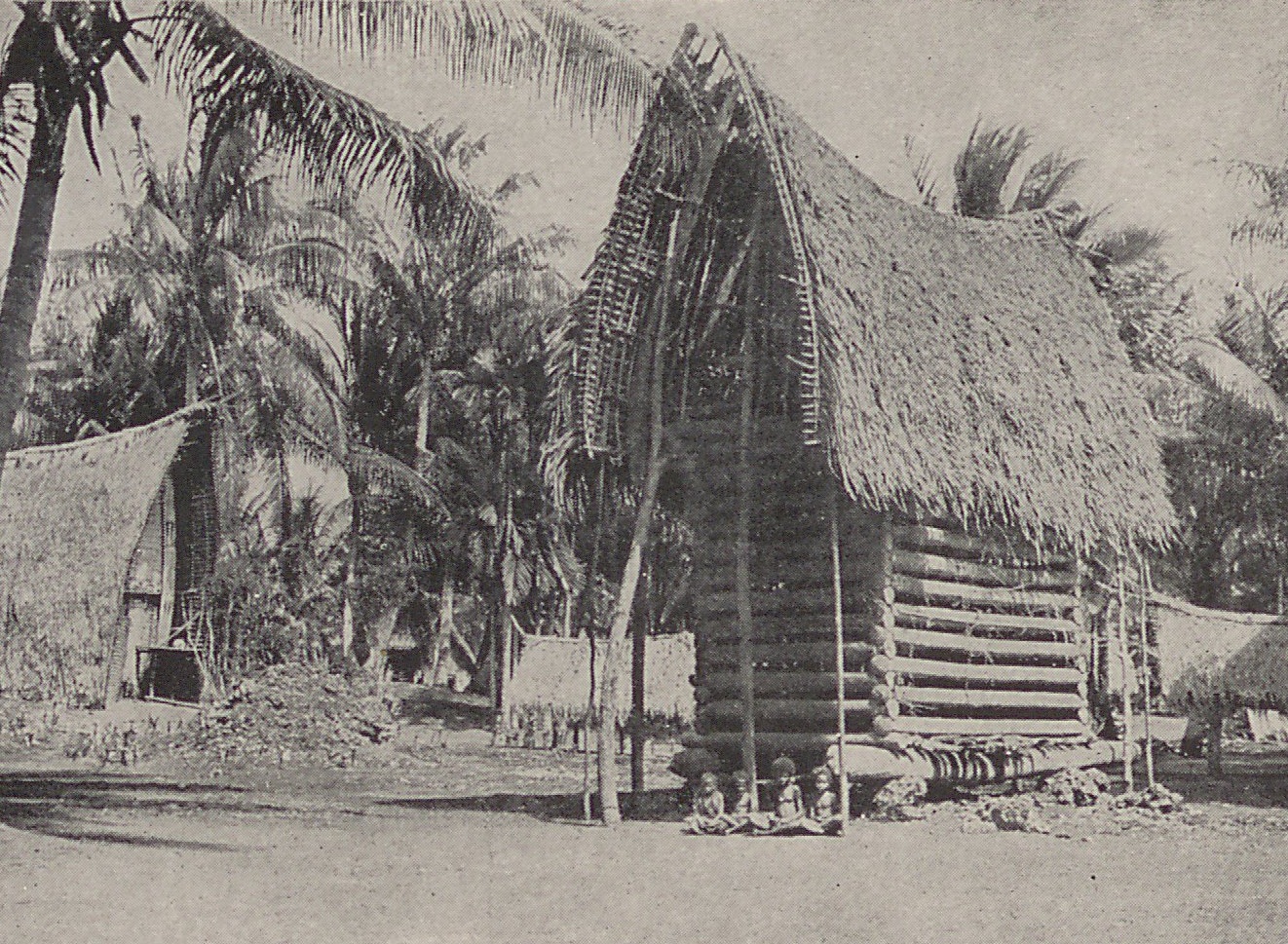 National Library of Poland, Wikimedia Commons
National Library of Poland, Wikimedia Commons
What Did These Activities Entail?
There was a good reason why women weren’t allowed in the men’s special club houses. Dangerous things were happening. Bodily fluids were being willingly shared between men as they practiced ritualized homosexuality and elaborate initiation rituals.
But these ancient intimate rituals are darker than you think.
Which Bodily Fluids Were The Most Important?
As we know, bodily fluids were believed to be extremely powerful. Given this information, many areas in Melanesia had a strong cultural belief that there are two specific bodily fluids which bring human life and important human growth: breast milk, and a man’s…load.
Infants were given breast milk to help them grow. And while you might guess that the man’s contribution was only used to reproduce—you’d be wrong.
How Did A Man Use His Bodily Fluids For Growth?
As awful as this may sound, old Melanesian traditions believed that boys could not grow to become men without ingesting male bodily fluids. Yeah, unfortunately you read that right.
Between the ages of seven and 13, boys would be taken from their homes and placed in separate boys’ houses away from the village. During this time, they would “prepare for manhood” by partaking in various initiation rituals—which would involve the boy accepting an older male’s fluid through various intimate acts.
But it had to be the boy accepting the man’s fluid—not the other way around. Because that would be crossing a line. Oh, and it gets worse.
The Creepy Uncle Thing Goes Way Back
The most important homosexual relationship for a boy was with his mentor—a man assigned by his father, and ideally his mother’s brother. That’s right: his “intimacy” mentor was his uncle.
And while this sounds traumatic and abusive, the Melanesian culture believed it to be both a duty and a bond. The boys would sleep and live with their mentors for years, preparing for adulthood—and creating “close intimate bonds”.
But intertribal relationships are not the only thing sacred in Melanesia.
The Importance Of The Pig
On a more digestible note, pigs are central to many Melanesian cultures. They are often considered a family’s financial capital, and support the village economy.
In many incidents, pigs are used in place of money. A pig can be sold as payment for school fees, to purchase a wife, and even as payment for committing an offence, like murder or wife stealing.
Because of its importance, pigs in Melanesia are cared for very well. They casually scavenge the villages for food, following little children around like pets—that is, until they are needed.
When Is A Pig Needed?
Pigs are most often used as sacrifices in ceremonial rituals. It is extremely important that a pig is sacrificed in celebration of births and deaths. In fact, it is strongly believed that if you did not give pigs their due, a “special devil” awaited you in the afterworld.
At the same time, pigs signified wealth and prestige. Sometimes, men would slaughter numerous pigs as a way to move up the social ladder.
Today, pigs remain an important part of many Melanesian cultures.
What Is Melanesia Like Today?
We can talk about the ancient history of Melanesia forever, as there are so many intriguing aspects of these incredible, primitive cultures. But the best part of it all is, many parts of Melanesia still practice many of their traditional ways.
As we know, their religious practices did change, for the most part. Many Melanesians today practice Christianity, but not all. Some still hold strong to their spiritual beliefs—except maybe without living sacrifices and ritualized homosexuality, which we can all agree is progress.
But when did things change?
Colonization In Melanesia
It’s hard to say exactly who colonized Melanesia first, as many different foreign troops arrived on their sandy soil. Europeans made their way to the islands back in the 17th century, and upon their arrival, they introduced something that would change the region forever.
As soon as outsiders made their way into Melanesia, people started getting sick—and by people, we mean the Melanesians. The Europeans unintentionally introduced a number of illnesses and diseases to an unsuspecting culture that had never experienced such a thing before.
Not only that, they were ill-equipped to deal with these raging diseases. Without medicines and doctors, the Melanesians were dropping like flies.
How Did Colonization Make Melanesia More Dangerous?
European outsiders didn’t just walk up gently, they came in hot—with guns blazing. Not only did they forcefully take over villages, enslaving the Melanesians, they also exacerbated warfare between local groups by providing them with firearms—a stark change from their usual bows and arrows.
At the time, this sudden cultural shift was terrifying, but exciting. If only they knew just how far things would go.
No End In Sight
Once foreign outsiders made their way into Melanesia and converted half the population to Christianity, they got to work on their next big takeover project—logging. As soon as they realized the absolute gem they stood upon, dollar signs began to appear everywhere they looked.
Many parts of Melanesia were prime locations for logging, mining, and fishing—which eventually turned the island paradise into a nightmare.
What Became Of Their Island Paradise?
It didn’t take long for the formerly classless Melanesian society to become class-stratified, complete with politicians, public servants, and a slew of entrepreneurs looking for a gold mine. Roads were built, connecting rural villages to urban districts, and remote islands finally became accessible. Large plots of land were cleared to build storefronts and make room for motorized vehicles.
And while many Melanesians happily played along, eventually, they missed the good old days, with grass skirts and thatched roofs.
Melanesia Today
Today, many parts of Melanesia are independent nations, with differing social and political organization. And although these regions are heavily influenced by Western culture, many rural areas have managed to maintain their traditional ways of life. Most Solomon Islanders, for example, still live in small villages without electricity, motor vehicles, or grocery stores.
And believe it or not—they prefer it this way.

